The best over-ear headphones for any budget, all tested by our experts
The top over-ears from Sony, Bose and more – if we don't rate them, we don't put them here

- Quick list
- Best overall
- Best budget
- Best premium
- Best budget Sony buy
- Best for noise cancellation
- Best wireless planar magnetic
- Best affordable wired
- Best open-back wired
- Best for design
- Best for movies
- Best for Apple fans
- Best high-end wired
- More options
- Meet the team
- How to choose
- How we test
- Latest updates
This guide is unique compared to others you’ll see online, because each pair of over-ear headphones we’ve recommended below has been thoroughly tested by our expert team. You can trust all of our choices because we’ve evaluated their audio performance, noise cancellation, battery life, comfort and features against class-leaders at the same price. Every pick below has a star-rated verdict based on the TechRadar team's real-world reviews and comparisons.
Headphones deliver spacious sound and comfort. Over-ear designs enclose your ears, delivering an immersive experience that generally beats in-ear buds – though it all depends on personal preference. It’s no surprise many of the best noise cancelling headphones are over-ears. Their large cups also pack powerful drivers for high-definition audio, clever mic arrays for cancelling out noise, and plush cushioning for solid passive isolation. It’s why they feature heavily in our best travel headphones guide, too.
Over-ear headphones don’t just sound great, either. They can also be better for your hearing health. That’s because the drivers are positioned outside the ear canal, not in it, which can help reduce strain on your eardrums. Whether you have a small budget, want a high-end pick, or prefer wired or wireless, the best over-ear headphones combine comfort, performance and style. Keep reading for the best we've tested.
The quick list
Want to cut to the chase and find out which over-ear headphones are the best? Here's a quick roundup of our choices. You can also jump to a more detailed review of every pick, along with our price comparison tool to help you find the best deals.
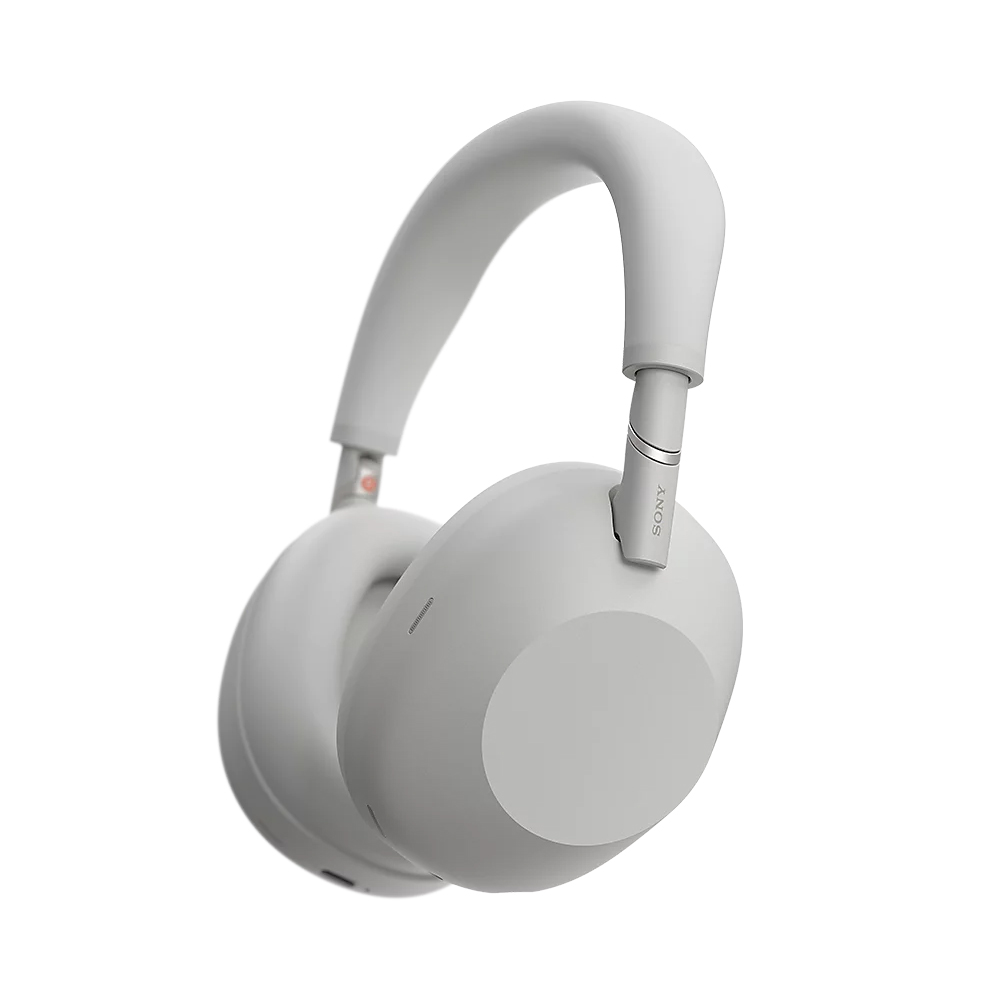
The best over-ear headphones overall
The latest Sony cans deliver best-in-class ANC and impressive upgrades across the board. Audio is excellent, they’re comfortable and packed with features, making them the best over-ears you can buy today.

The best budget over-ear headphones
A great-sounding pair of affordable over-ear headphones. With a very impressive 100 hours of battery life, customizable audio, solid noise cancellation and a comfortable fit, they're astoundingly good value.
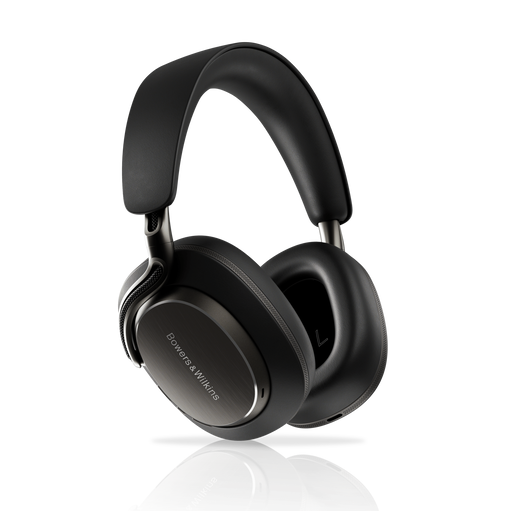
The best premium over-ear headphones
Everything about these headphones feels high-end. From the excellent build and class-leading sound to the slick finish and impressive spec, with even more features on the way.

The best budget Sony over-ear headphones
The WH-1000XM4s are a flawlessly designed pair of over-ear headphones that continue to remain a top pick because they're unbeatable value if you can find them for under $200/£200.

The best over-ear headphones for ANC
If sheer noise-stopping power is your goal, Bose can't be beaten. The 2nd gen Ultras are our top pick, packing awesome ANC, exciting sound into a comfy, lightweight design.

The best over-ear headphones for wireless audiophile sound
They're not cheap, but these sound wonderful thanks to their advanced planar drivers, which are rare in wireless headphones. There's no ANC, but they have tons of other features.
Load the next products...

The best affordable wired over-ear headphones
These offer dynamic, rich and expressive sound with plenty of attack – you would think they cost a lot more when you hear them. On top of that, they're well-made and comfortable for long periods.
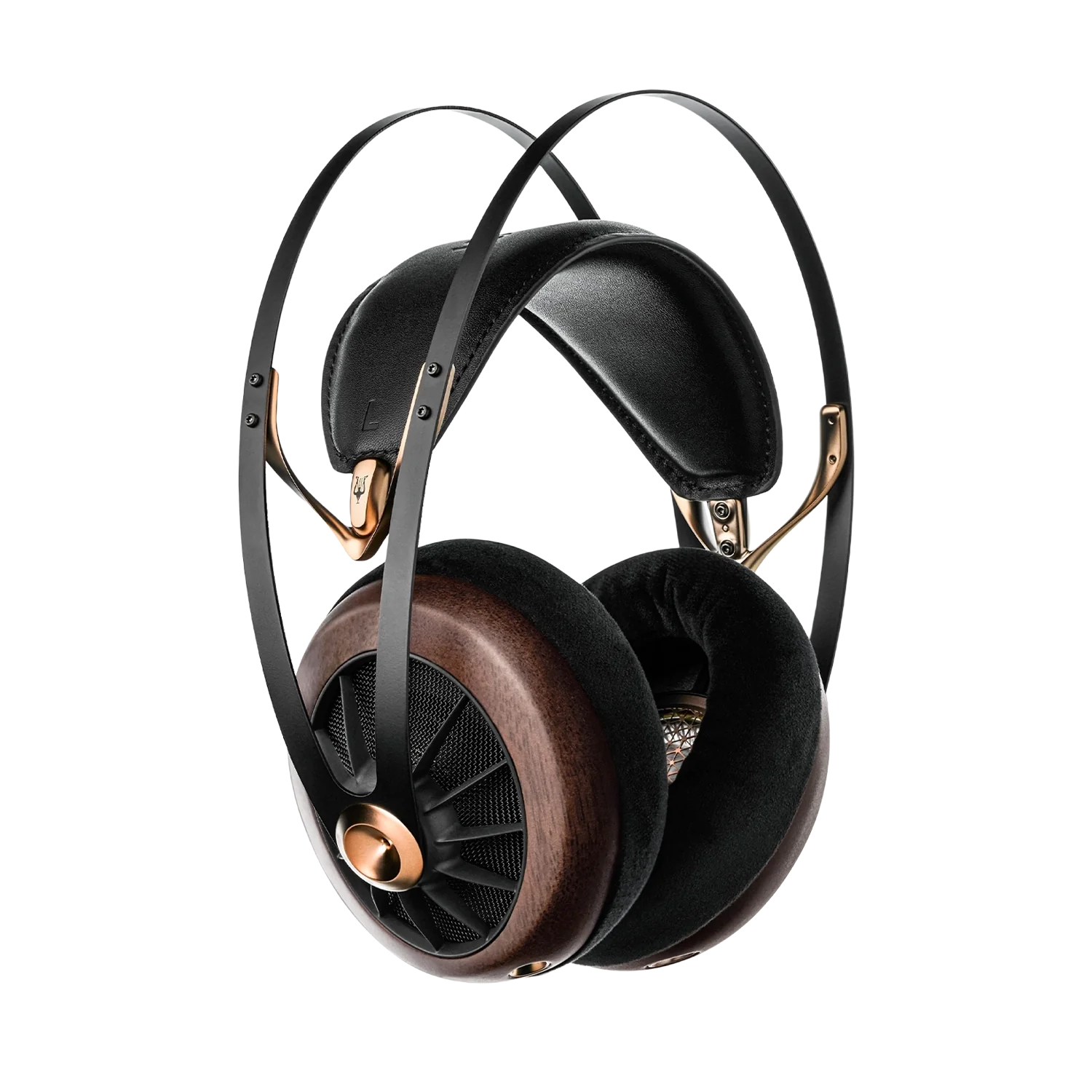
The best open-back over-ear headphones
When it comes to a wide, expansive soundstage, an open-back design is unbeatable. The Meze Audio 105 AER headphones sound incredible and are built to an impeccably high standard. Give them a miss if you have a smaller head though, the design may not suit you.
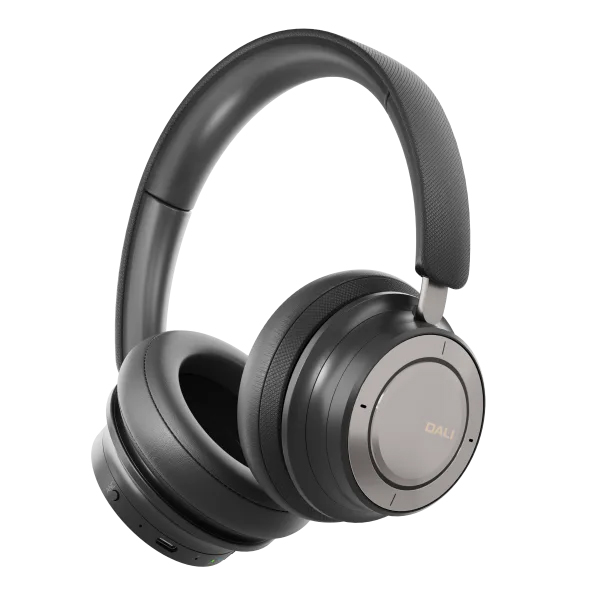
The best looking over-ear headphones
If you like your headphones to look and feel as premium as they sound, the Dali IO-8 are for you. With perfectly circular cups and a choice of finishes they score serious style – and sound – points.
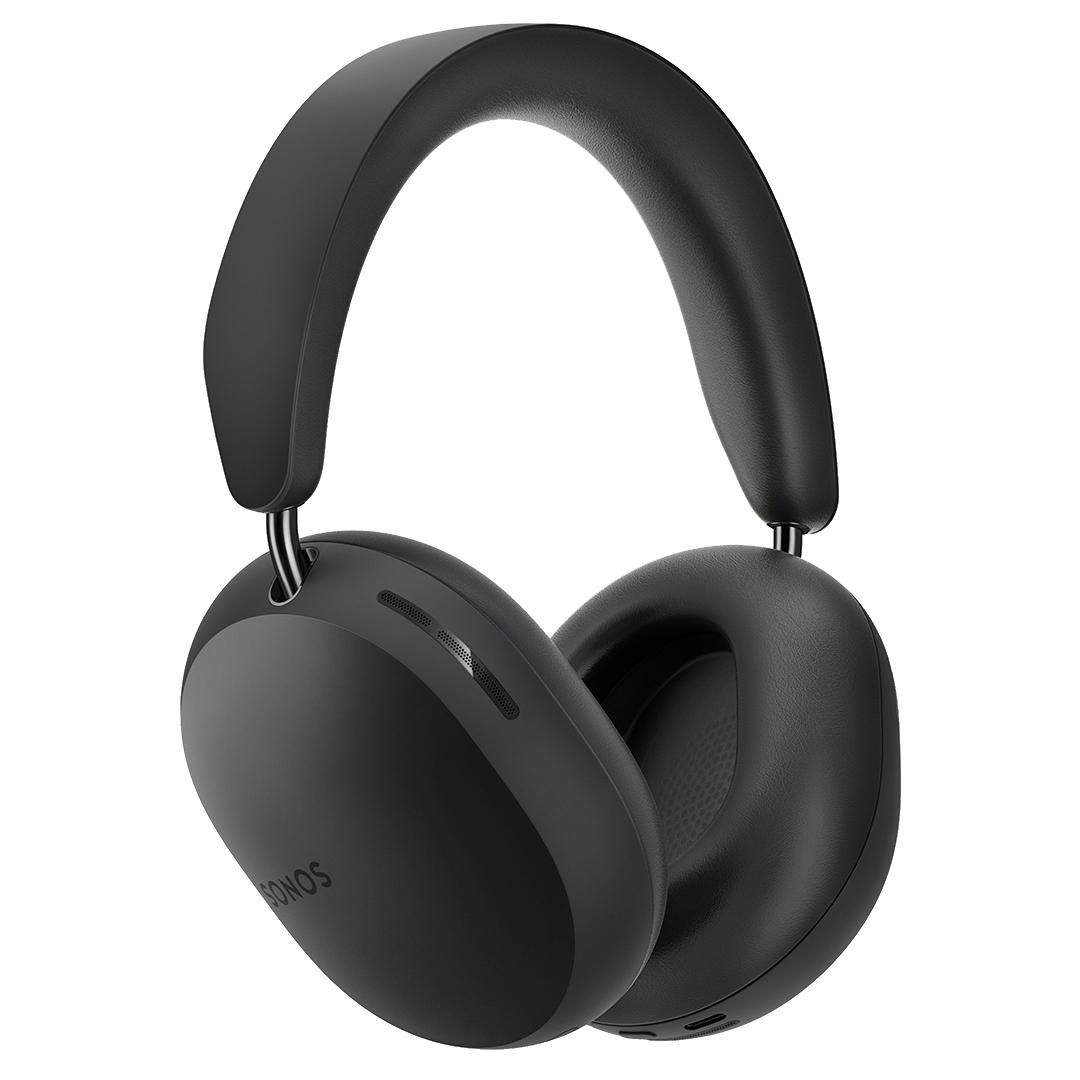
The best over-ears for movie audio
The Sonos Ace are pricey and imperfect with music – but for movies, they're second to none, and support Dolby Atmos spatial audio from any Bluetooth device. The ANC is great too.
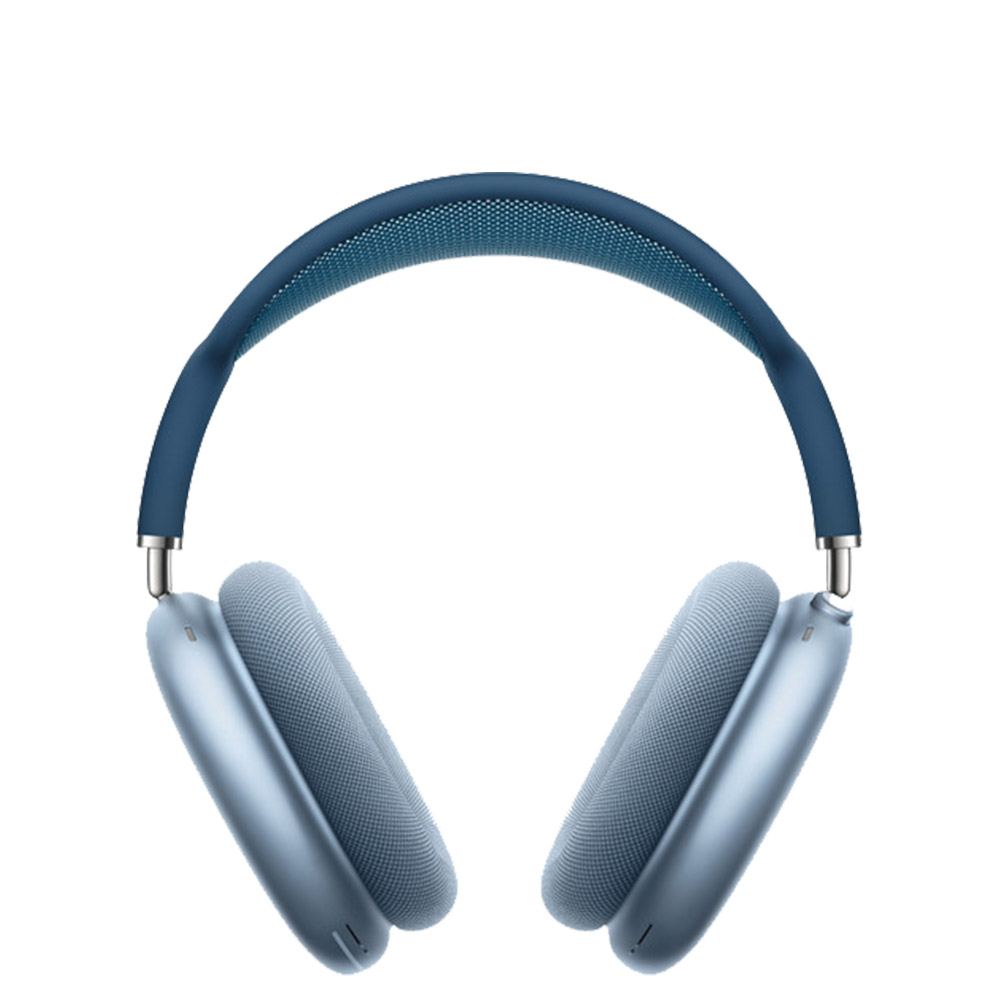
The best Apple over-ear headphones
These are full of special features for Apple devices that make them tempting if you're in that ecosystem, and they sound excellent, with high-end noise cancellation.
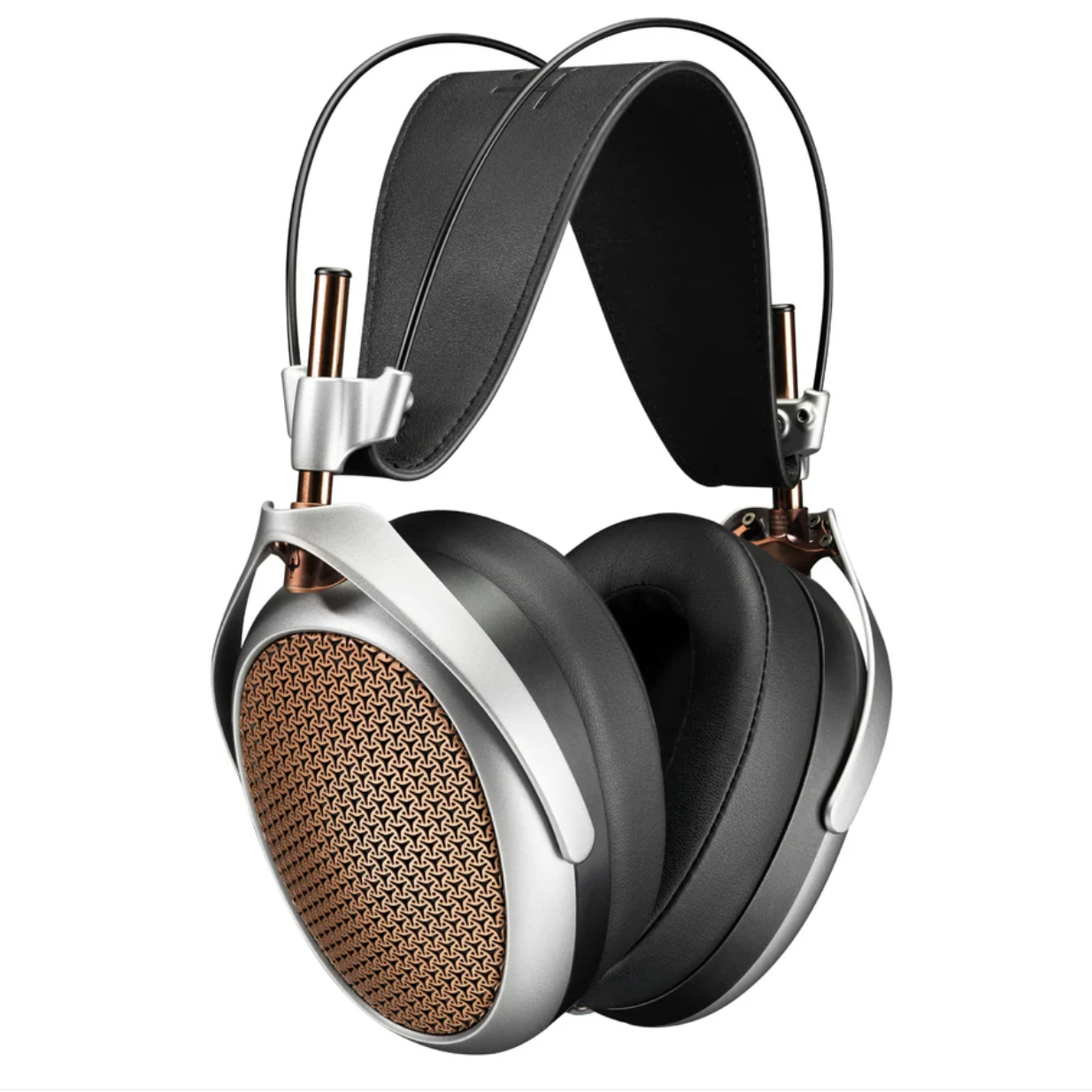
The best high-end wired over-ear headphones
If you've got the cash and want wired, the Poet are exceptional – from their art-deco inspired ear cups to their tactile transmission of transients and textures. Every inch the thoughtful, considerate, audiophile-grade listening cans.

I've reviewed over 150 audio products since becoming a tech journalist, ranging from super-budget earbuds to high-end Hi-Res Audio music players. Before joining TechRadar, I spent three years at What Hi-Fi? testing everything the world of audio had to offer; before that, I was a professional dancer. My love of music ties it all together.
December 15, 2025
Refreshed the introduction. Switched the Bose QuietComfort Ultra Headphones out for the newer Bose QuietComfort Ultra Headphones (2nd Gen), based on our recent testing. Added several models we’ve reviewed to the ‘also consider’ section, including the Sennheiser HDB 630, CMF Headphone Pro and FairPhone Fairbus XL (2025).
The best over-ear headphones you can buy
Why you can trust TechRadar
The best over-ear headphones for most people

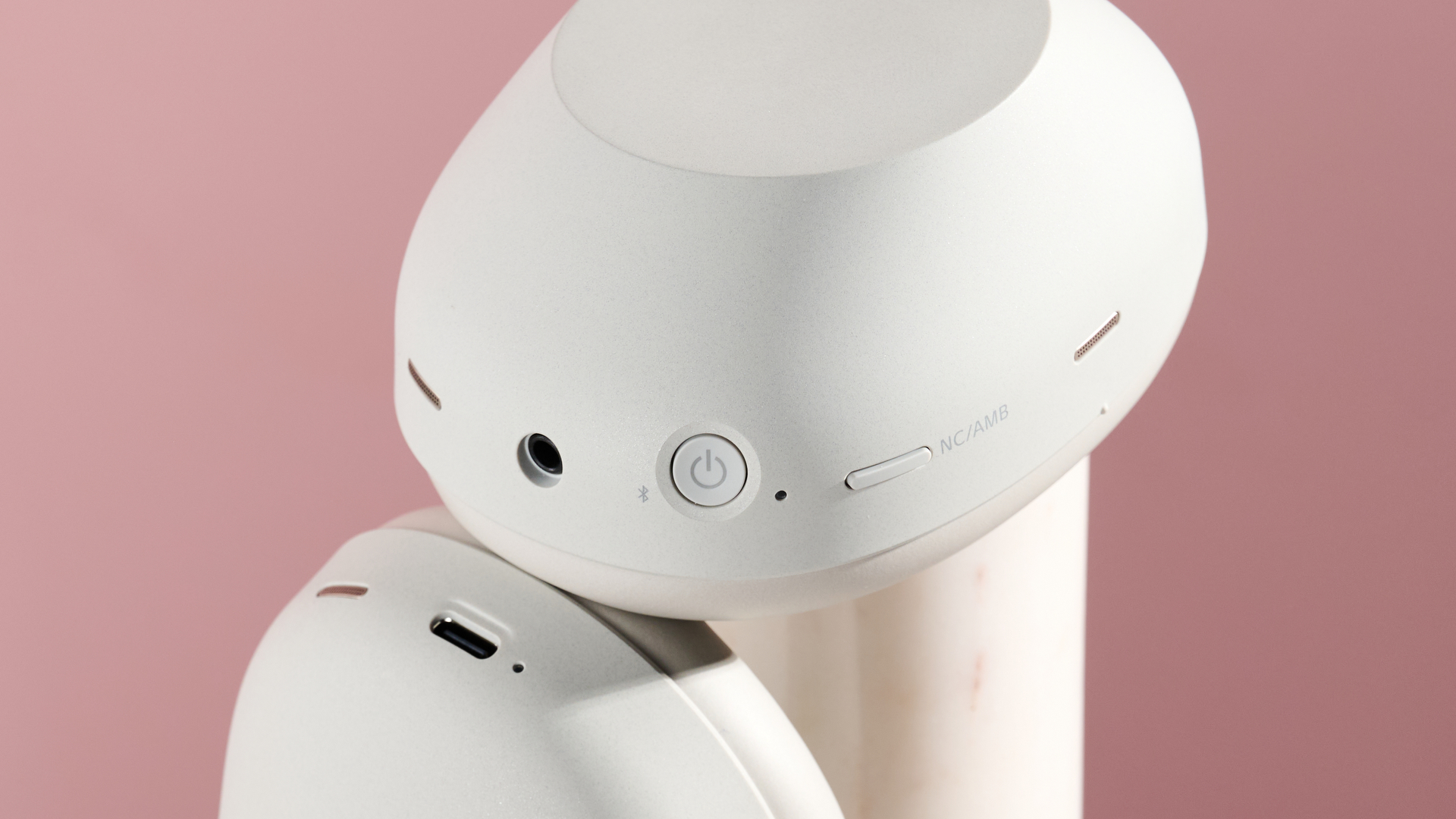
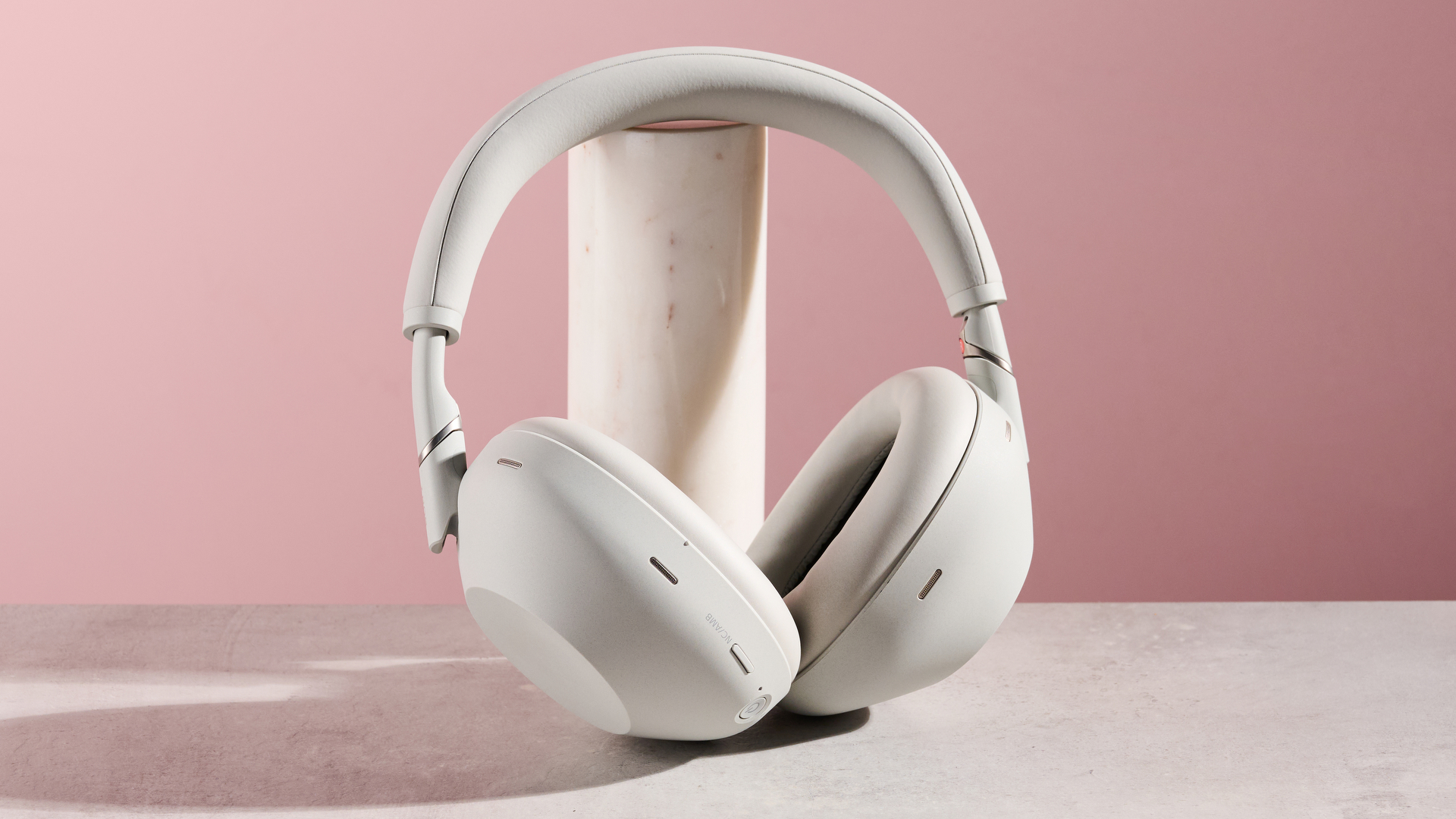

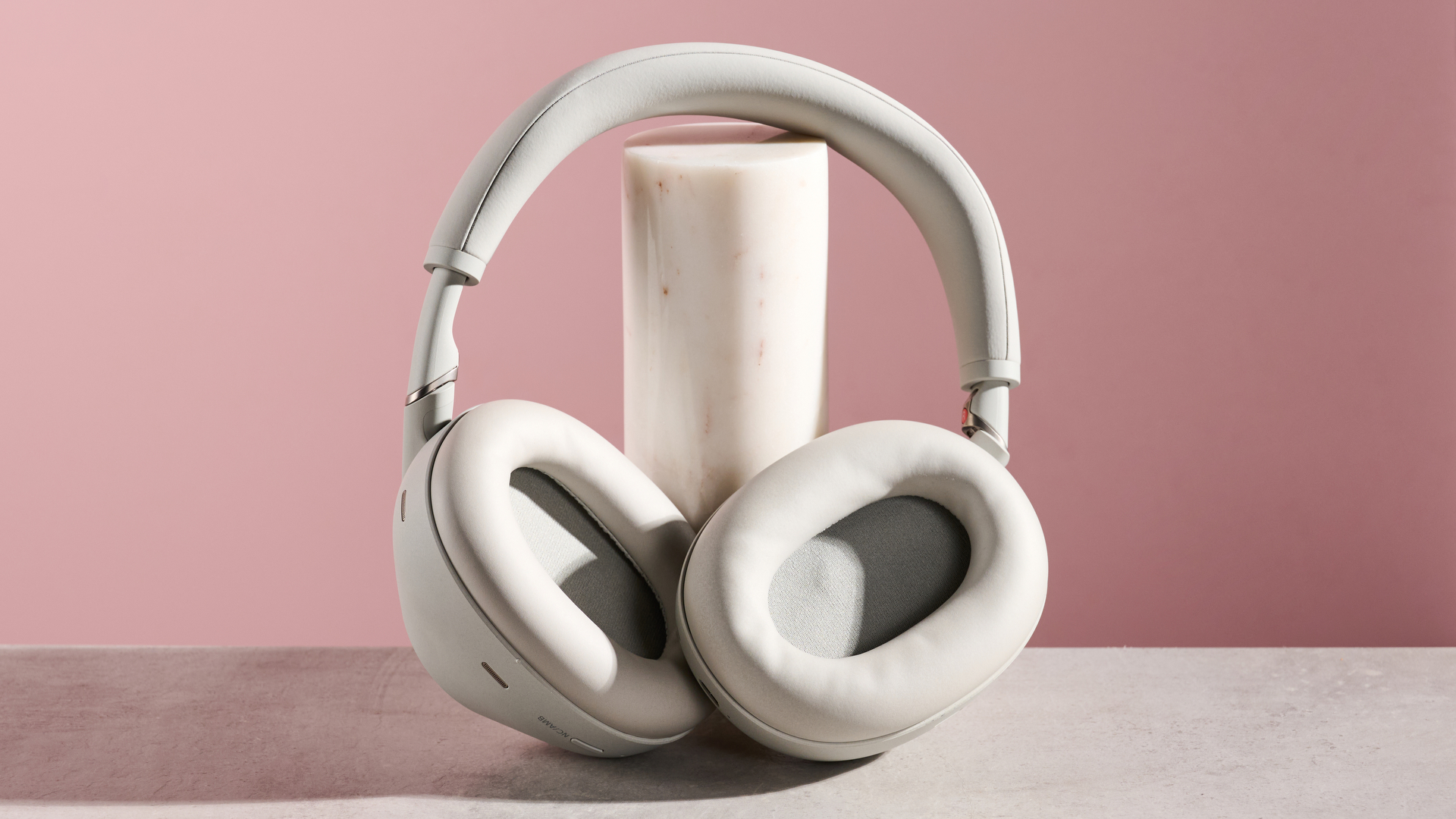
Specifications
Reasons to buy
Reasons to avoid
Sony has raised the bar again with its flagship over-ears, the WH-1000XM6. As expected, they’re exceptional in design, sound, ANC, and overall performance – finally surpassing the XM4s that topped this guide for years. Despite the higher price tag, they’re now our top pick for most people, having finally claimed the crown simply because they’re that much better.
The WH-1000XM6 are a major upgrade, particularly in noise cancellation. Thanks to the new QN3 processor and a powerful setup of 12 microphones (four more than before), the ANC is genuinely class-leading. During testing – even on public transport or beside busy traffic – we experienced near-total silence. If immersive listening is your goal, this is as good as it gets.
Sound quality impresses too. The new 30mm driver, paired with that upgraded processor, delivers expressive, detailed audio with a more balanced tuning out of the box – punchy bass, rich mids, and crisp treble all intact.
Design-wise, Sony combines the foldable portability of the XM4 with the sleeker look of the XM5. You also get intuitive touch controls, a premium finish, and an even more comfortable headband.
They’re not cheap, but if you want the most powerful noise-blocking headphones around, with equally impressive comfort and sound, they’re easily worth it.
Read our full Sony WH-1000XM6 review
The best budget over-ear headphones
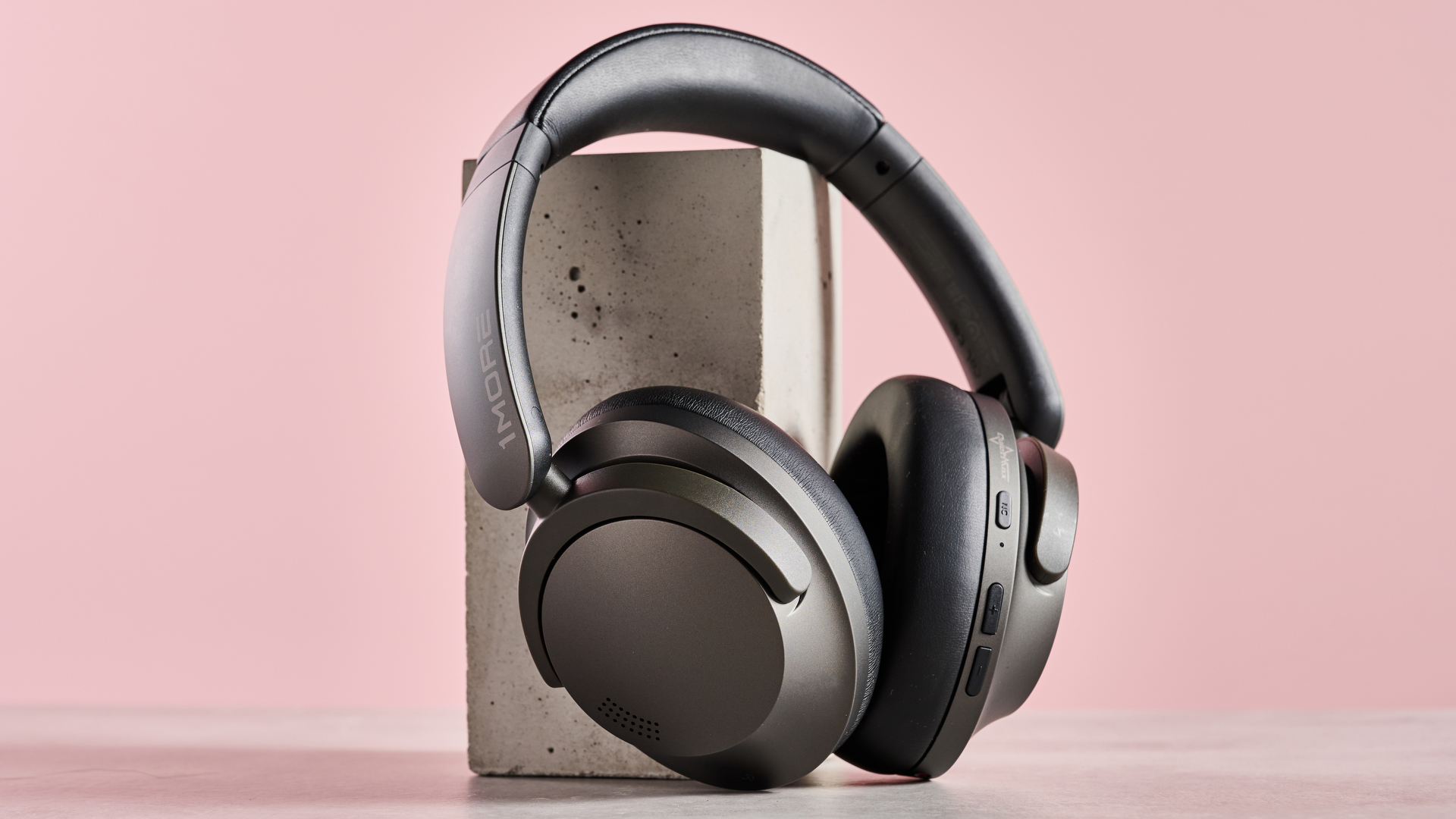
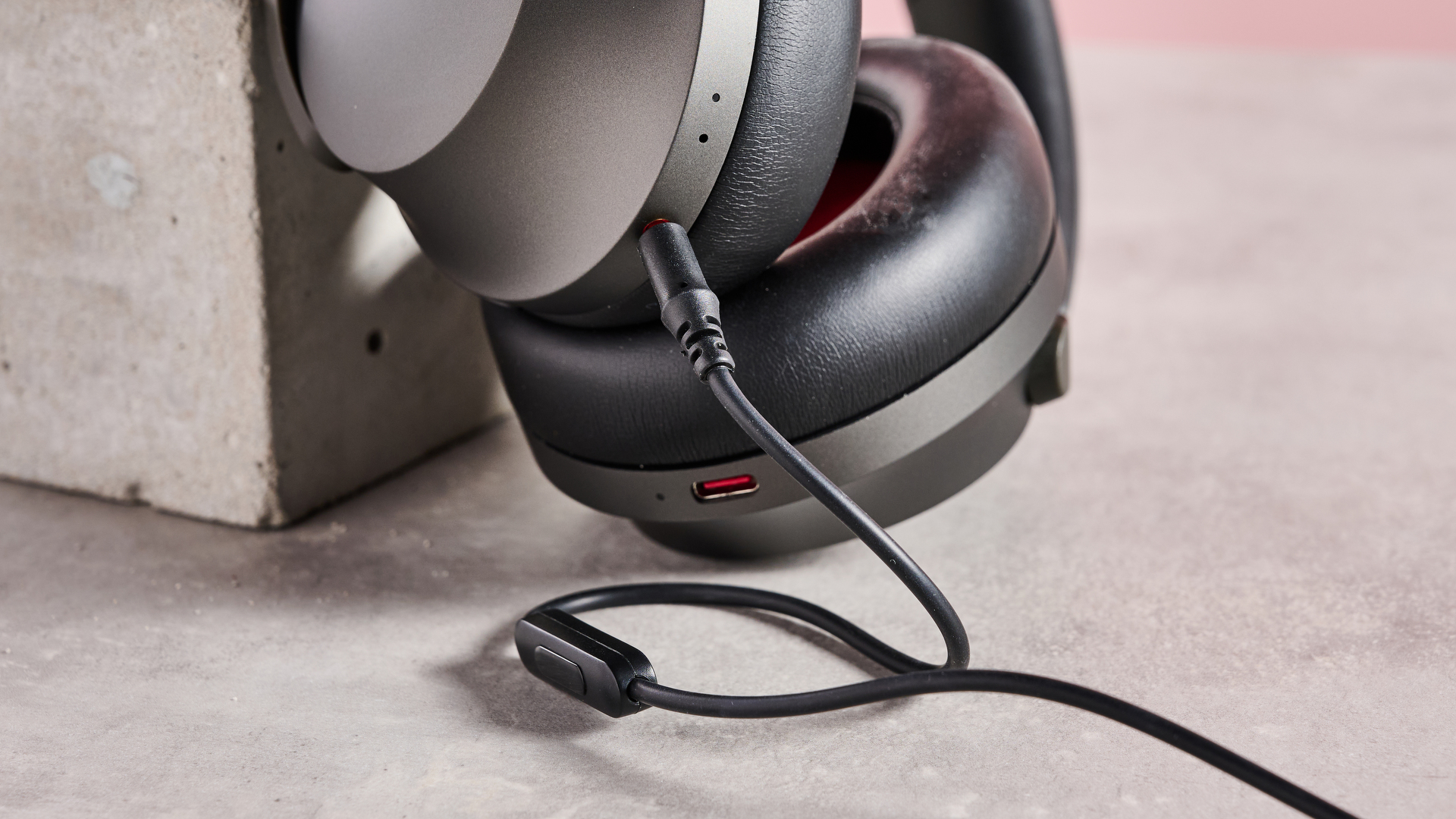
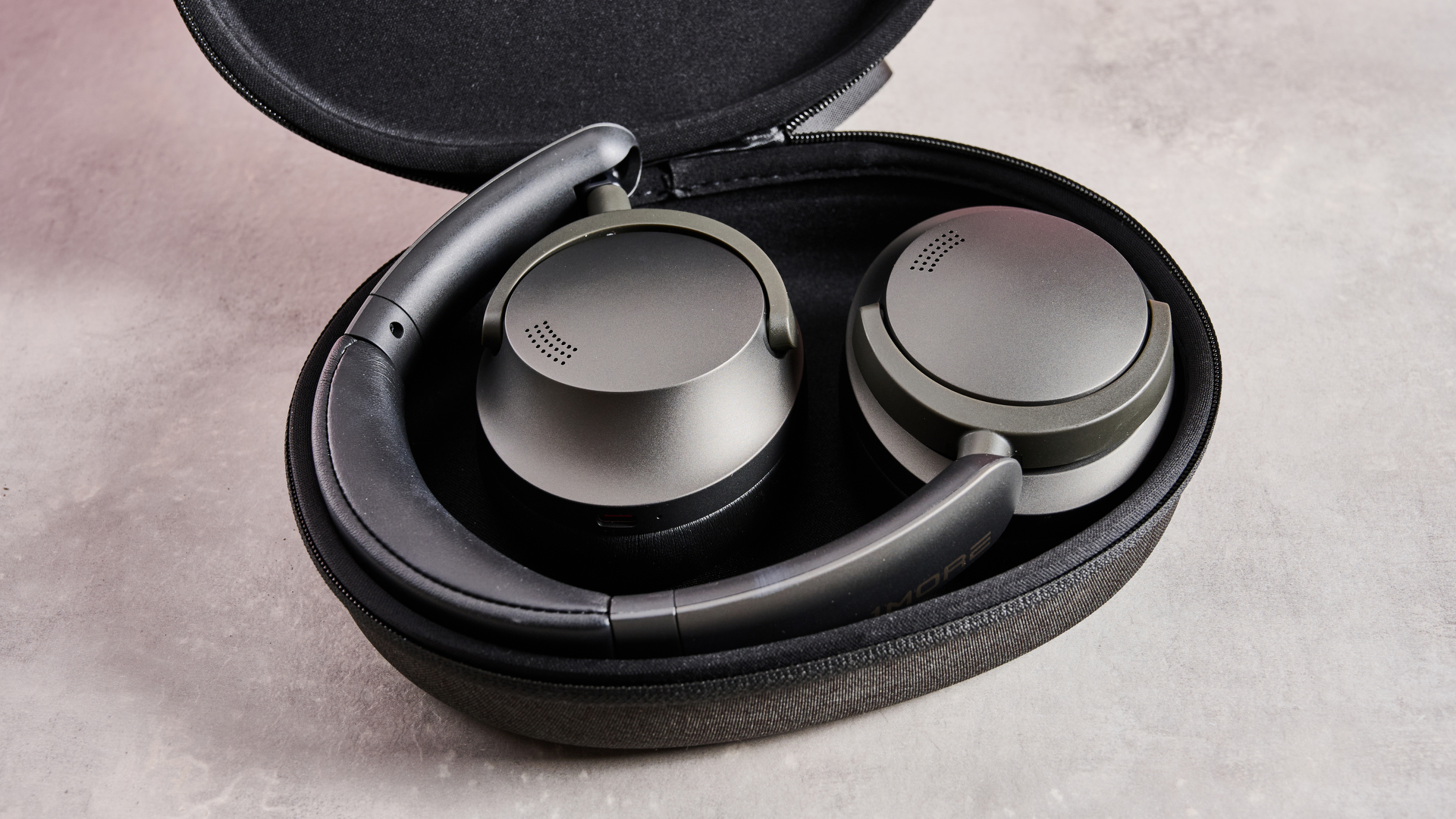

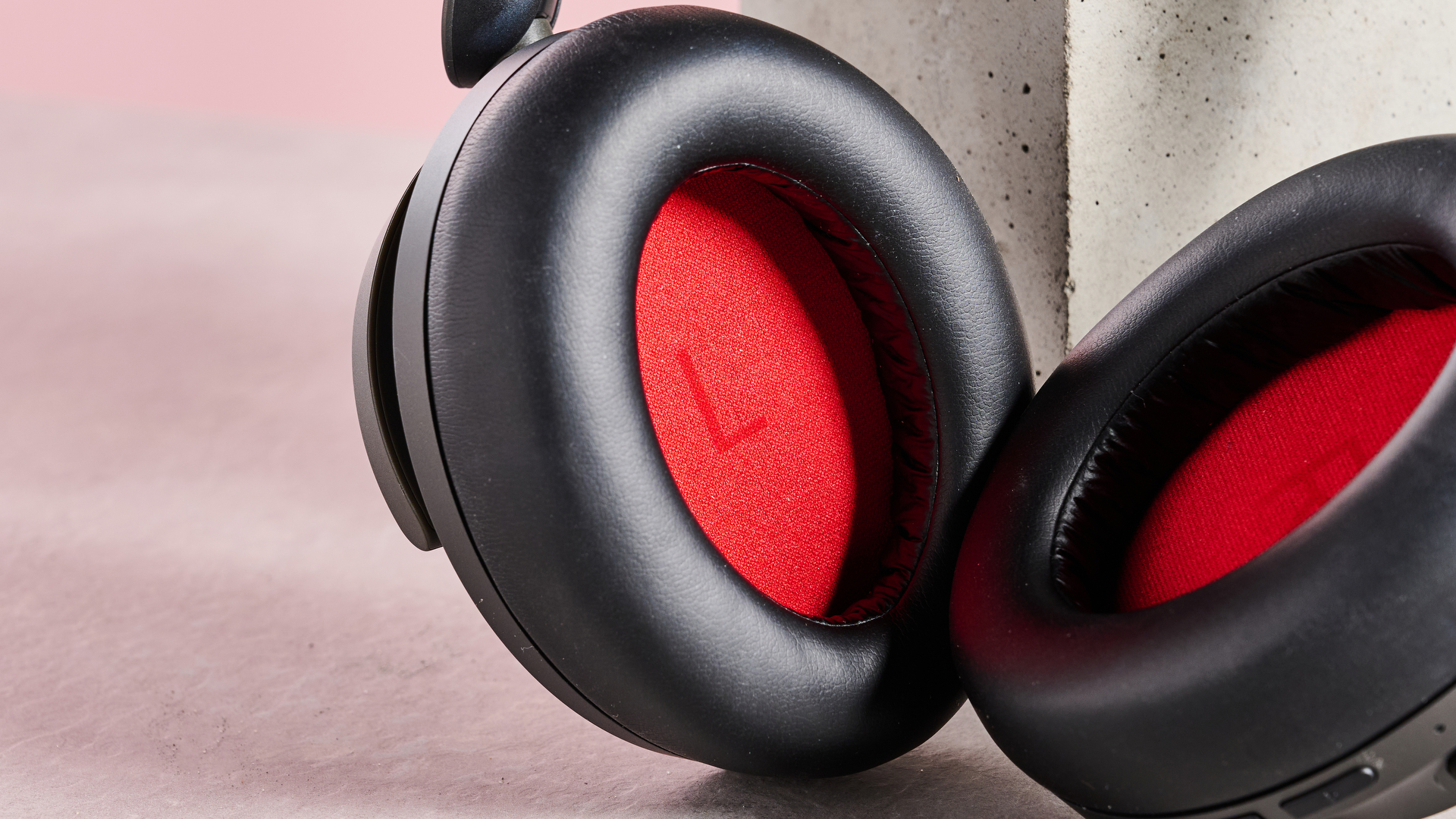
Specifications
Reasons to buy
Reasons to avoid
If you want great over-ear headphones without spending a fortune, the 1More Sonoflow Pro HQ51 are hard to beat, and are our top budget pick. They pack in a lot for the price, including solid active noise cancellation, a whopping 100 hours of battery life, and surprisingly decent sound.
The 1More Sonoflow Pro HQ51 go big on features. You get ANC and a transparency mode, LDAC support for higher-quality Bluetooth streaming, and up to 100 hours of battery life – that’s if you turn off LDAC and ANC, but there’s still an impressive 65 hours with ANC on. In our testing, we found that ANC performance is better than expected for the price, easily clamping down on background chatter, traffic and general noise. The passthrough mode does a good job of helping you to stay aware of your surroundings.
Sound quality is seriously respectable here. While they don’t match more premium pairs of headphones we've tested, the audio is clear and pleasingly bassy. You can adjust the EQ through the companion app if you’d prefer a more balanced profile, and this had good results too. In general, there's an energy and dynamism to them that's easily lost in cheaper headphones – especially if the budget has gone on supporting lots of other features too. There's no feeling of being short-changed here on sound.
We found them comfortable enough to wear for long sessions, thanks to soft padding and a lightweight frame. They also look pretty slick, with a matte finish and sleek forward-tilted design. The build is where you feel the price a little – the buttons and headband are more plasticky than more premium headphones – but they’re still perfectly durable for everyday use.
For under $100/£100, you’re getting a strong all-rounder here. These over-ears are comfy, capable, long-lasting, and good-looking. If you’re after an affordable pair of headphones with premium features, the Sonoflow Pro HQ51 are a standout budget pick.
Read our full 1More Sonoflow Pro HQ51 review
The best premium over-ear headphones




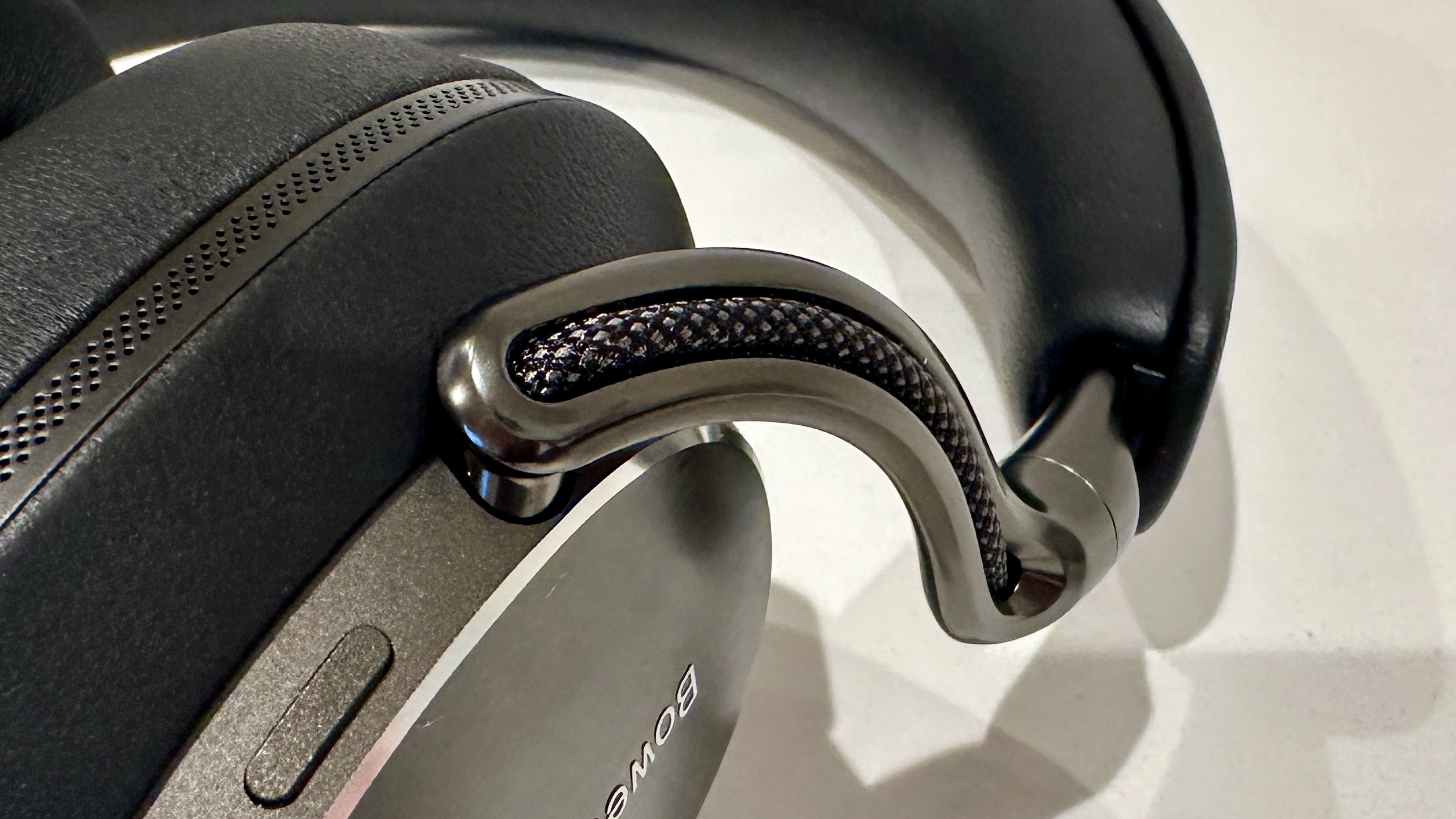
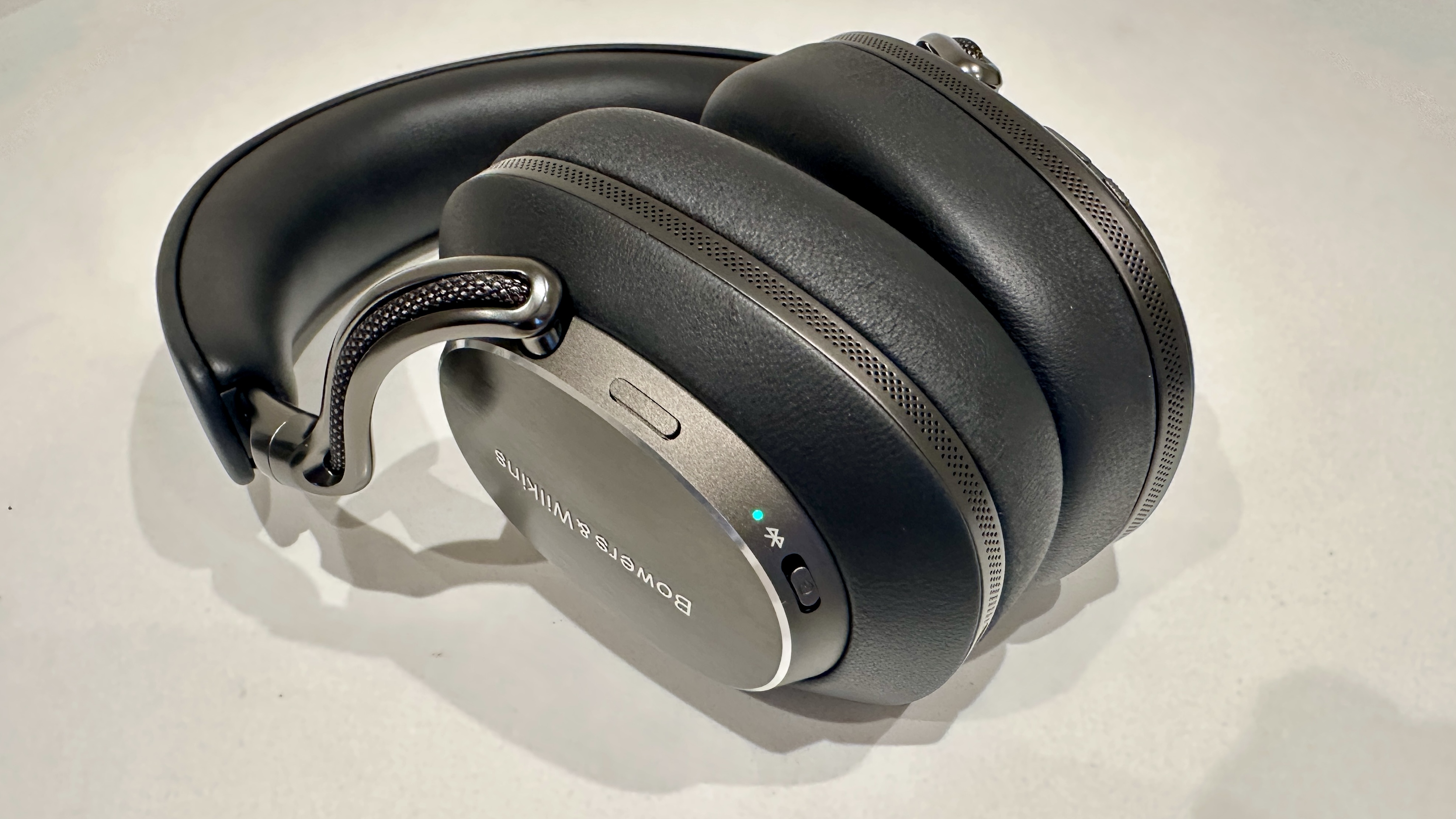
Specifications
Reasons to buy
Reasons to avoid
The Bowers & Wilkins Px8 S2 are about as premium as mass-produced wireless headphones get. The good news is that the sound absolutely lives up to the price tag too. They’re a subtle evolution of the Px8 that came before them and the more affordable Px7 S3 (firm favorites of ours that the Px8 S2 replace in this guide). But the refinements on offer here do add up – and then some. These over-ears are lighter, sleeker and come with improved noise cancellation and even better sonic performance.
Inside, upgraded carbon-cone drivers, a new motor system and refined tuning deliver some of the most open, dynamic, and detailed sound you’ll hear from wireless headphones. The Px8 S2s also create a spacious, balanced soundstage with beautifully controlled bass, natural mids and crisp treble. What we’re saying is, audio performance is exceptional. They’re easily among the best-sounding headphones you can buy right now.
Noise-cancelling is very good here, though not quite at Bose or Sony levels. However, that’s a small sacrifice for this kind of audio quality. Bluetooth 5.3 with aptX Lossless support, a 30 hour battery life and reliable controls via the app round out the package in terms of features too.
The headphones are finished in aluminium and nappa leather (which means they're not ideal for vegans, unfortunately) and have a very high level of detail and finish. Which means they do look and feel every bit their $799 / £629 price tag. If you want class-leading sound in a design that’s premium and sophisticated, the Px8 S2 are the ones to beat.
Read our full Bowers & Wilkins Px8 S2 review
The best budget Sony over-ear headphones
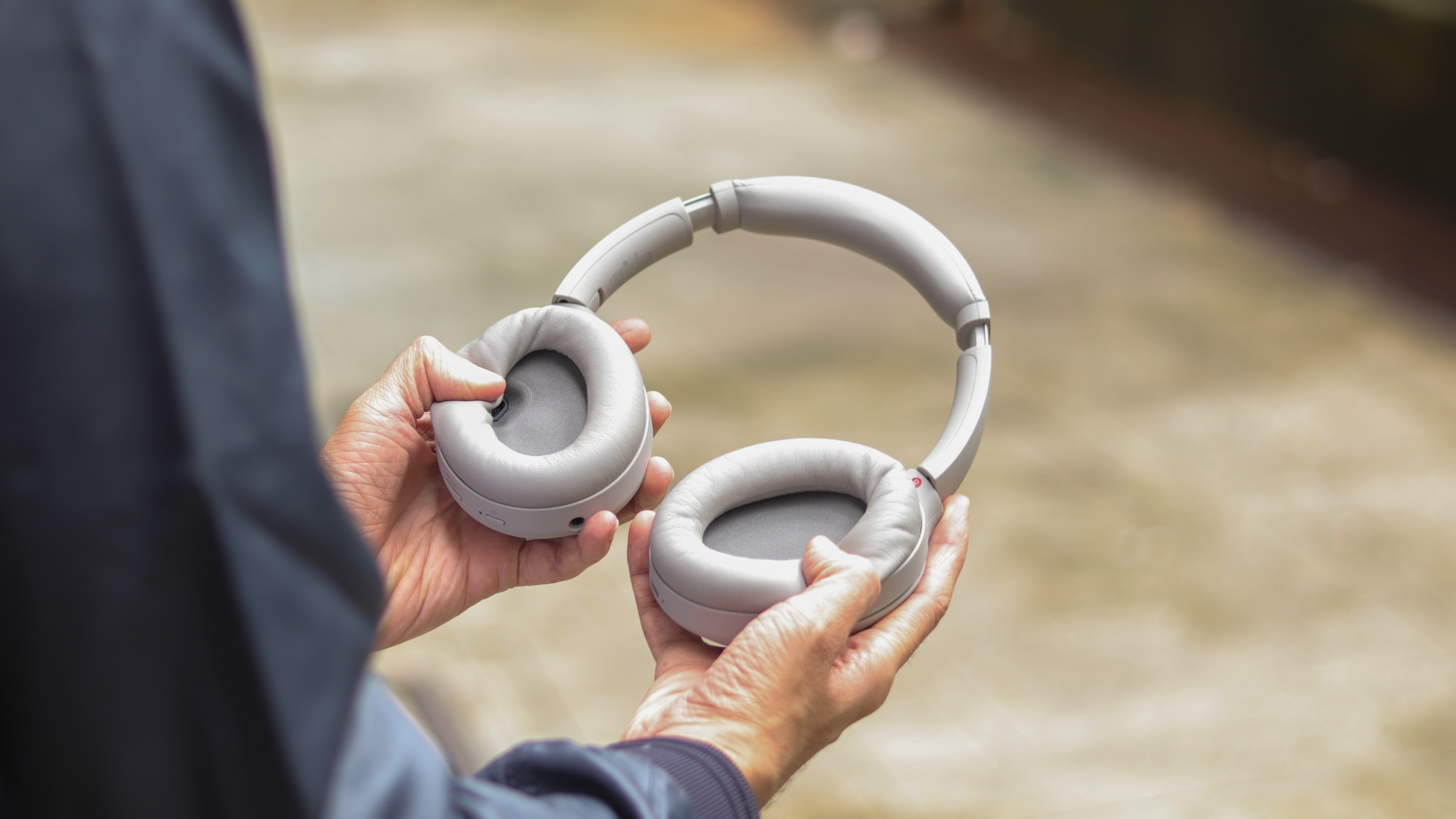
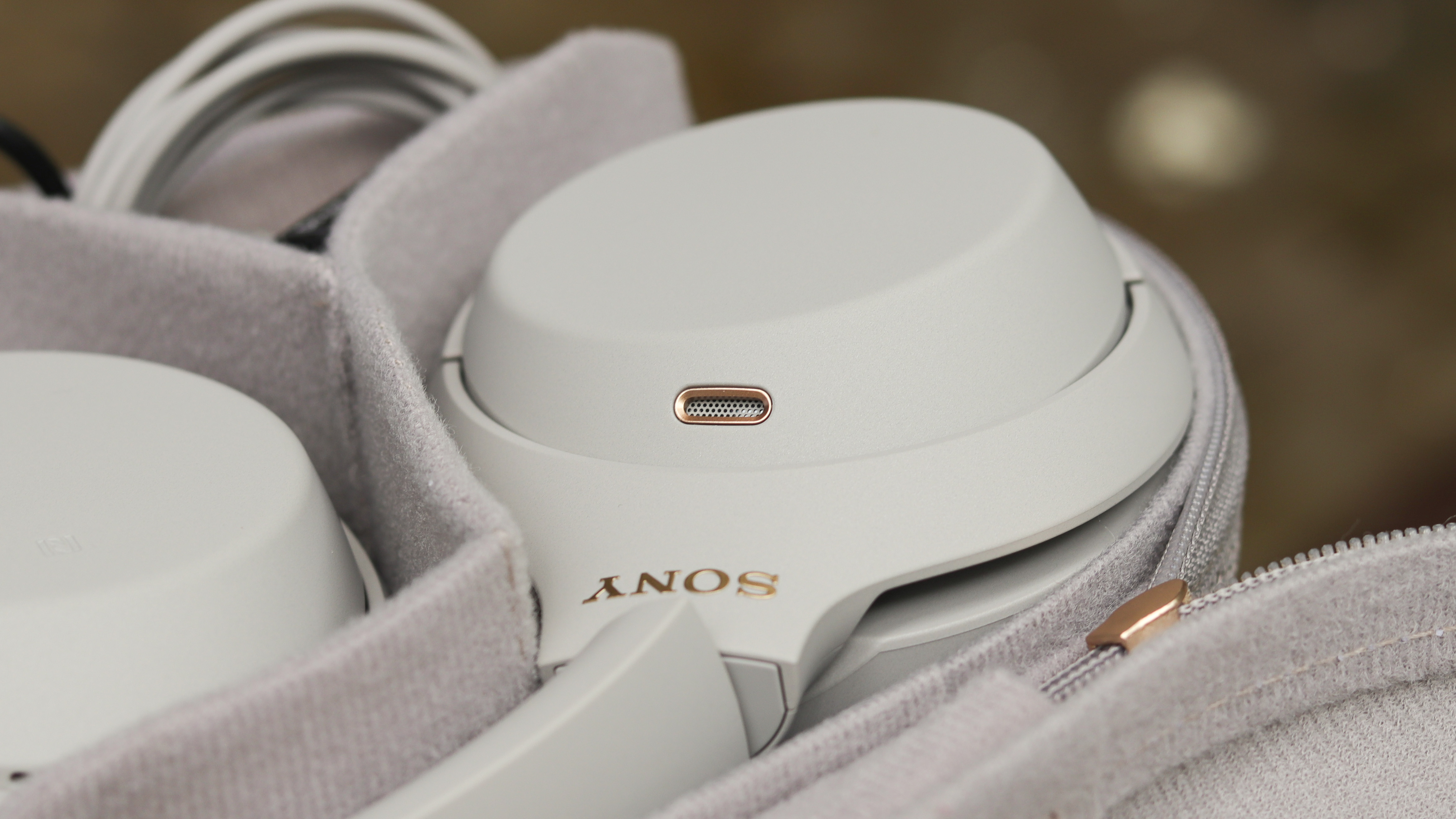

Specifications
Reasons to buy
Reasons to avoid
The WH-1000XM4s may no longer be Sony's flagship headphones. That title has since passed to the Sony WH-1000XM5 and, more recently, the WH-1000XM6 at the top of this list.
But we still recommend the XM4s if you're looking for exceptional Sony design, sound and ANC on a budget – and their iconic shape certainly doesn't hurt. Now that they’re no longer the newest model, you’ll find them available at much lower prices. You can do better in most individual areas if you’re after the ultimate pair of headphones (usually by opting for the newer XM6s), but not as a complete package for under $200/£200 – a price we regularly see these Sonys drop to. Our recommendation assumes you’ll find them around that mark during a sales event.
Aside from clear, well-balanced and detailed sound, there's also highly effective noise cancellation. You get useful extra features too, including multi-point pairing for switching between two devices instantly, DSEE Extreme upscaling of lower-quality audio (such as from Spotify), auto-pausing when you remove them, Sony’s 360 Reality Audio format, and LDAC high-quality wireless tech for compatible phones.
They're also lightweight and comfortable, with a folding design that's ideal for travel. Now that their price has dropped, especially if you grab them at one of their frequent sales prices, they're unbeatable value, which is why they're still a top recommendation here despite their age.
Read our full Sony WH-1000XM4 review
The best over-ear headphones for noise cancellation
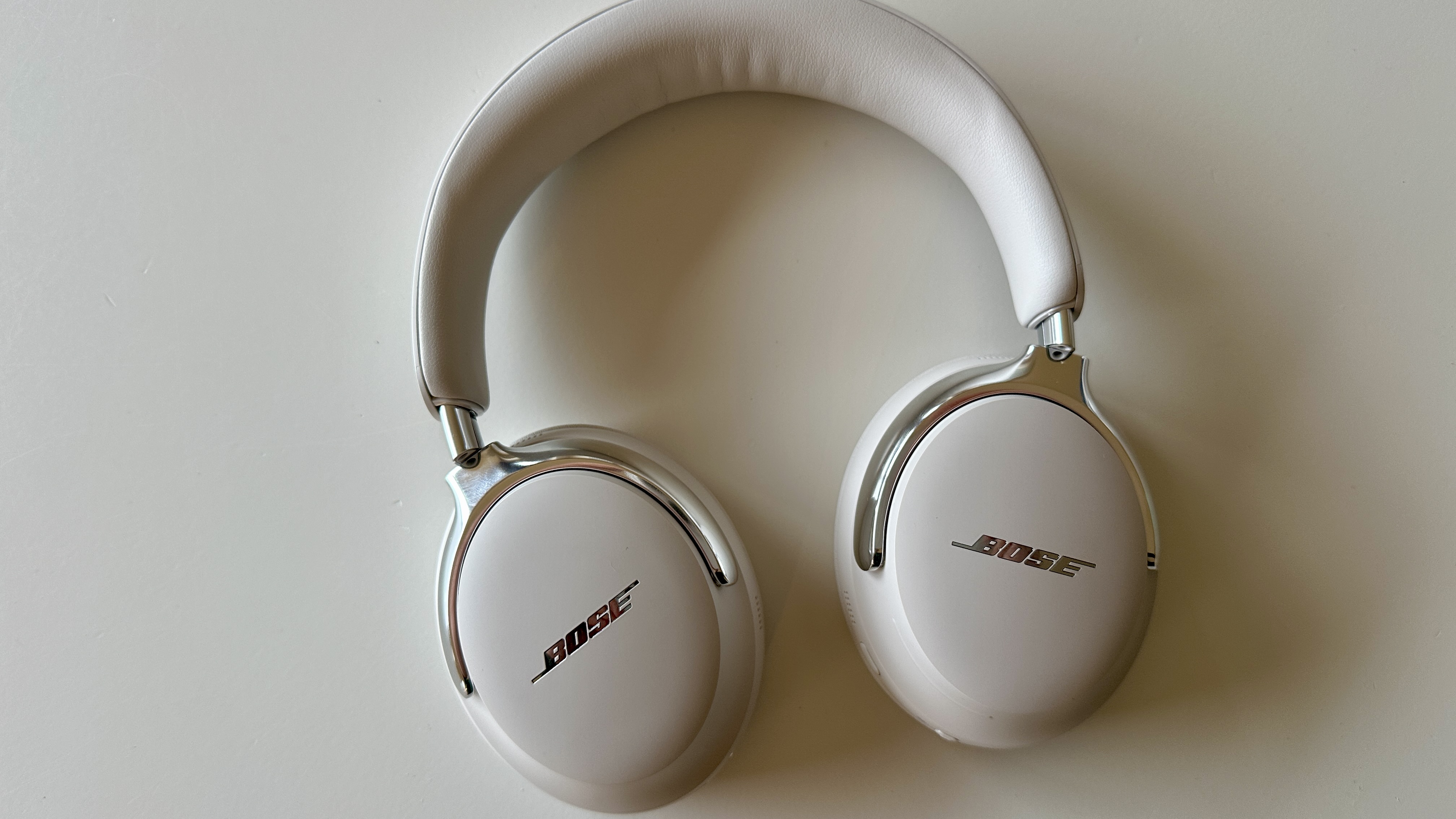


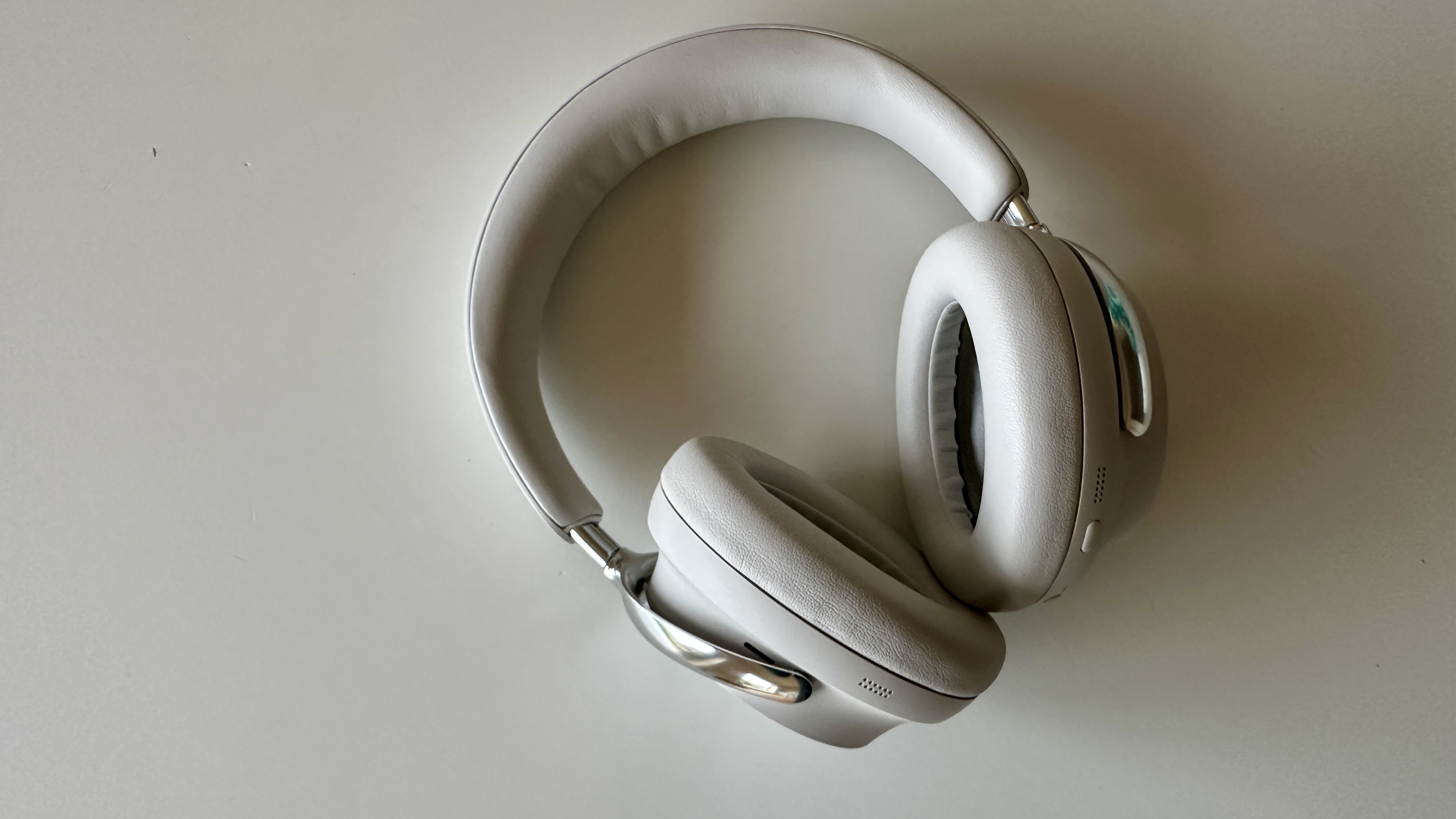
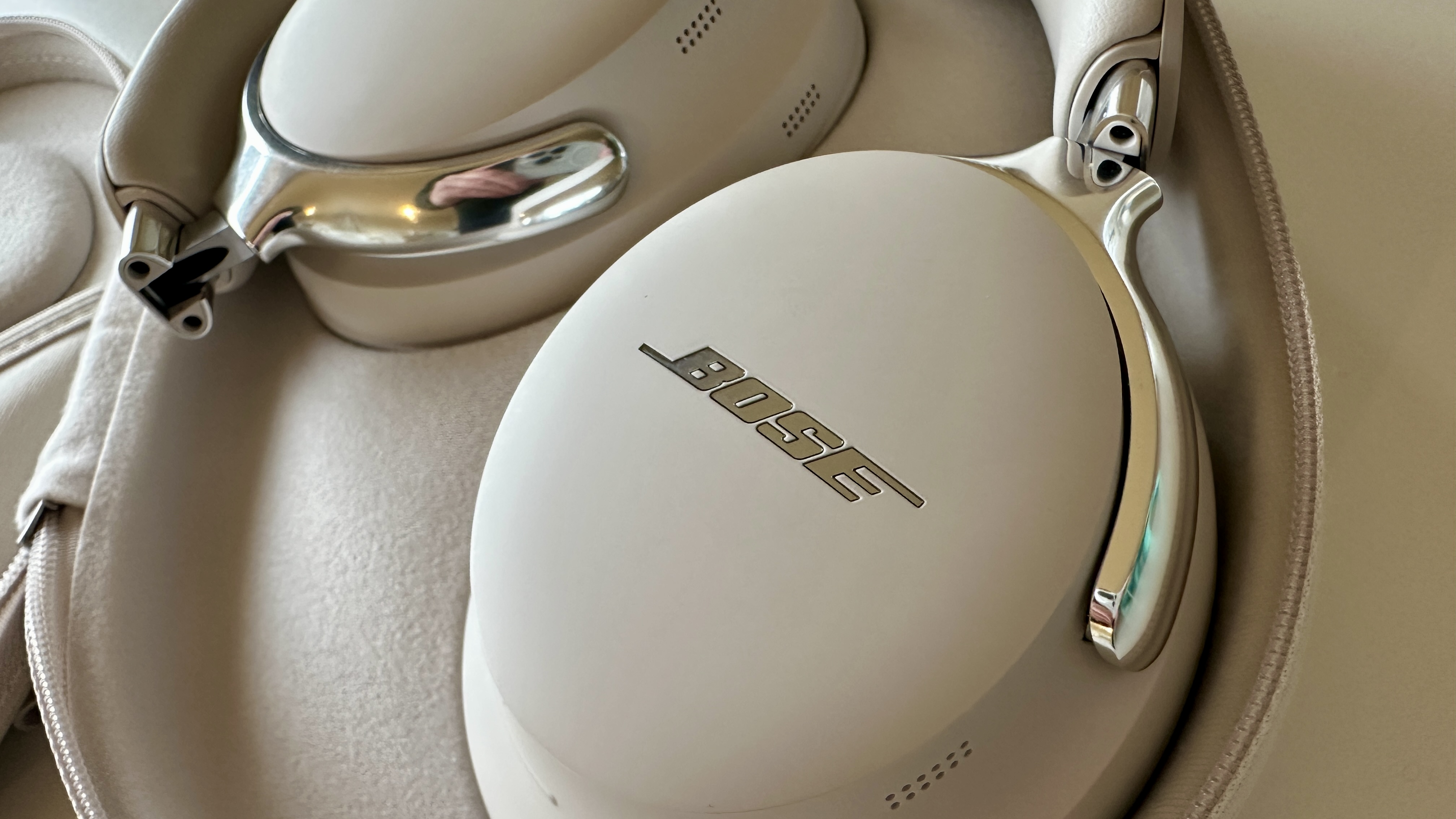
Specifications
Reasons to buy
Reasons to avoid
The Bose QuietComfort Ultra Headphones (2nd Gen) are our top pick for sheer noise-cancelling power. The Sony WH-1000XM6s in the top spot do now rival them for pure ANC performance. But if you’re a Bose loyalist (and many of us are), these remain our ultimate recommendation. They take the place of the original QC Ultras in this guide, which they’re very similar to, but some of the newer upgrades here (better battery, more listening modes, hard-wiring them to a music source, etc) make them the better choice.
As our reviewer wrote, the ANC here is “absolutely superb”. It really is the best noise-cancellation you’re going to get at anything like this kind of money. Having said that, this power does still come at a premium price, as is typical for Bose, but it’s also paired with truly glorious audio quality too, which makes it worth every penny in our books.
Let’s talk about that audio quality, shall we? They’re not the most detailed headphones around. But the sound here is energetic, engaging and truly impressive. The bottom end digs deep, the soundstage is large and defined and that fantastic ANC makes it even more enjoyable. Bose’s take on spatial audio is here too, with added listening modes now for an even more cinematic experience.
As always with Bose, these headphones look and feel premium, while remaining light, comfortable and travel-friendly thanks to a foldable design. One of our criticisms of the original QCs was the just fine battery life, but that’s had a boost here to 30 hours with ANC on, which isn’t class-leading but is very welcome.
If you want a more affordable alternative, you might find the original Bose QuietComfort Ultra Headphones for a little less now they’re the older model. Or you may even consider the Bose QuietComfort Headphones that came before them. They can’t match the upgrades here, but they’re both Bose and as their names suggest they still do quiet and comfort exceptionally well. Otherwise, the Bose QuietComfort Ultra Headphones (2nd Gen) really are special. They do ANC like no other over-ears at this level, look good, feel great and received a rare five out of five stars rating in our review.
Read our full Bose QuietComfort Ultra Headphones (2nd Gen) review
The best wireless planar magnetic over-ear headphones
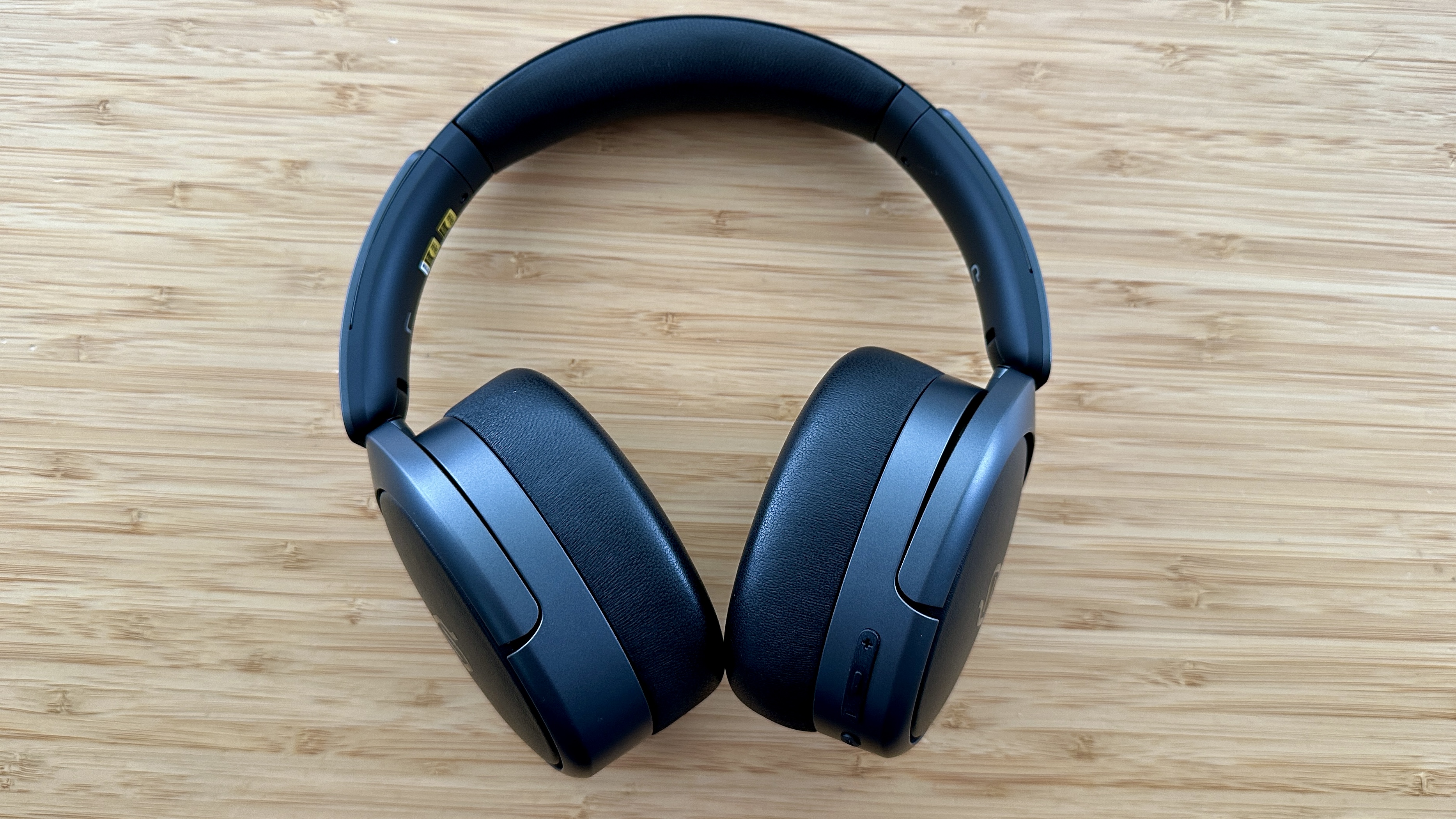
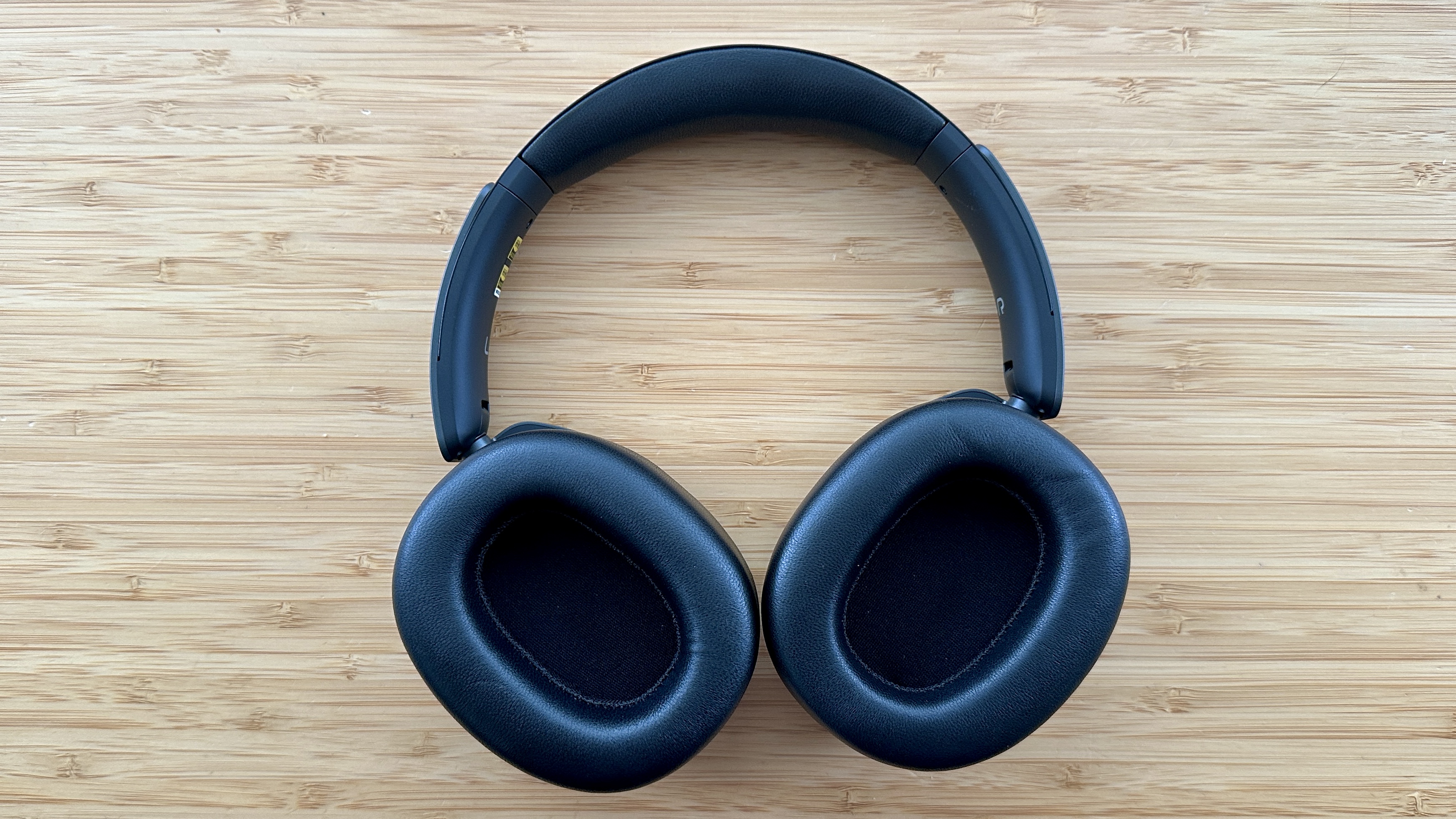
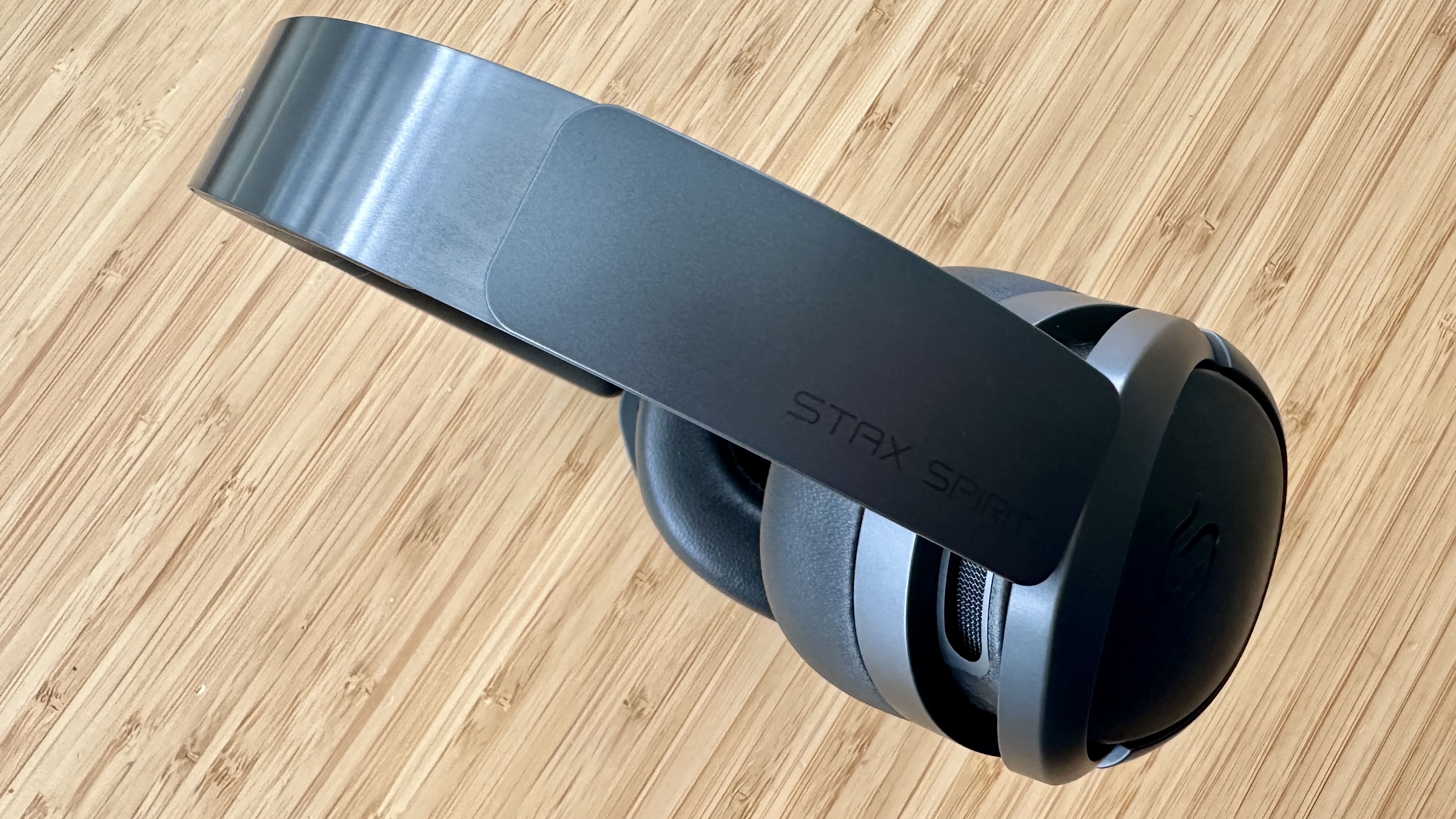

Specifications
Reasons to buy
Reasons to avoid
Planar magnetic headphones feature a different kind of speaker driver to the vast majority of headphones. Planar tech is known for being incredibly dynamic and detailed, making it a favorite of audiophiles, but it's also hard to power and leads to chunky headphones designs. As a result, it's always been rare to find the tech in wireless headphones, but the Edifier Stax Spirit S5 have found a way to make it work, and it's fantastic.
We said in our review that "it doesn’t matter if you’ve listened to a recording plenty of times before now – I’m confident the Edifier Stax Spirit S5 will find some tiny aspect of it or detail within it that you’ve never heard (or, at least, noticed) before." We love just how well the reveal and resolve the fine elements of tracks, but what keeps us coming back to them is that they're also very entertaining, full of low-end oomph and energy. They're also reasonably forgiving with lower-quality streams from the likes of Spotify – you don't have to be a Tidal member to hear what they can do. At louder volumes, the treble can become a little hard-edged, but this is only really a flaw in comparison to very high-end headphones.
The big omission here, though, is active noise cancellation. The passive noise isolation is actually very good, and they're closed-back, but they're definitely better in less-noisy environments. However, they're well-specced elsewhere, including support for all three major high-res wireless codecs: aptX Lossless, LDAC and LHDC.
They're not the smallest headphones in the world, but by audiophile standards they're practically compact, and they're not too heavy at all at 347g, meaning they're very comfortable to wear. They come with two sets of ear pads, and the mesh ones do a great job of keeping your ears cool, too. Those who are against the use of animal products, be warned here, though: they have leather on outside of the earcups, and one of the sets of ear pads is lambskin.
At $499 / £499, they're obviously up there with the more premium headphones in our list, but they offer sound quality that exceeds this price, and are positively affordable by planar magnetic standards. For hardcore music lovers, we actually think they're incredible value – but obviously it's a steep price regardless.
Read our full Edifier Stax Spirit S5 review
The best affordable wired over-ear headphones
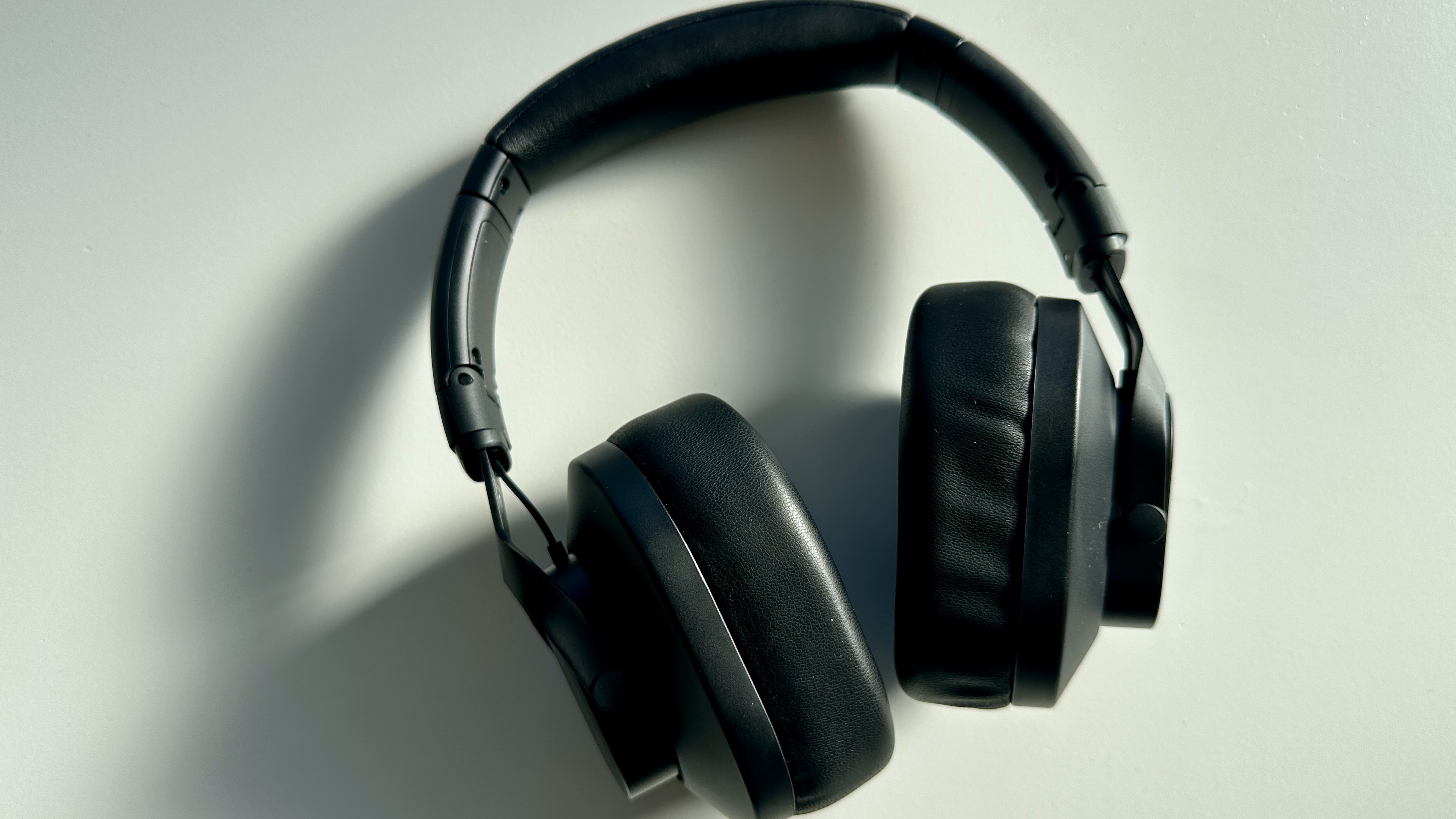
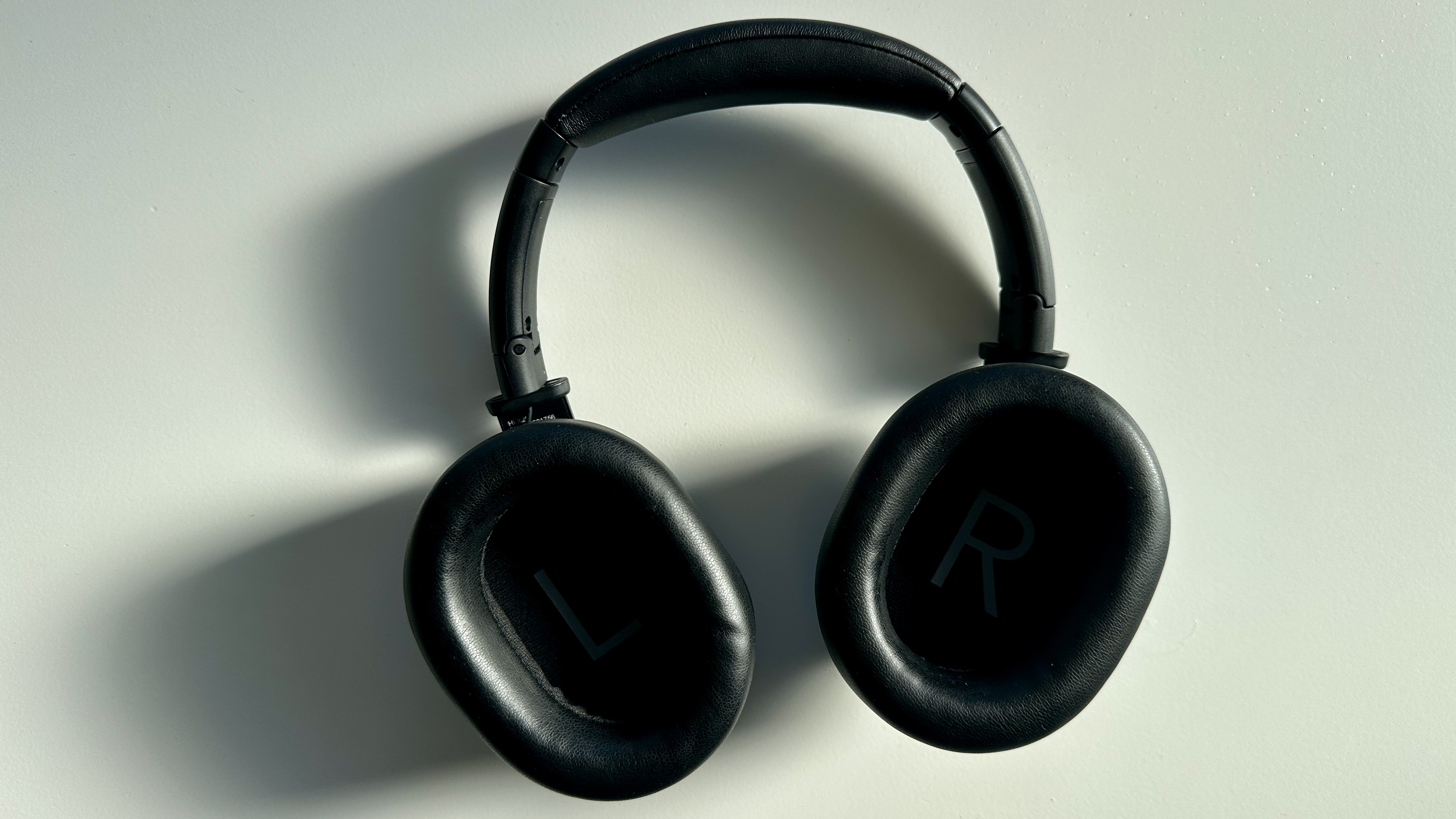
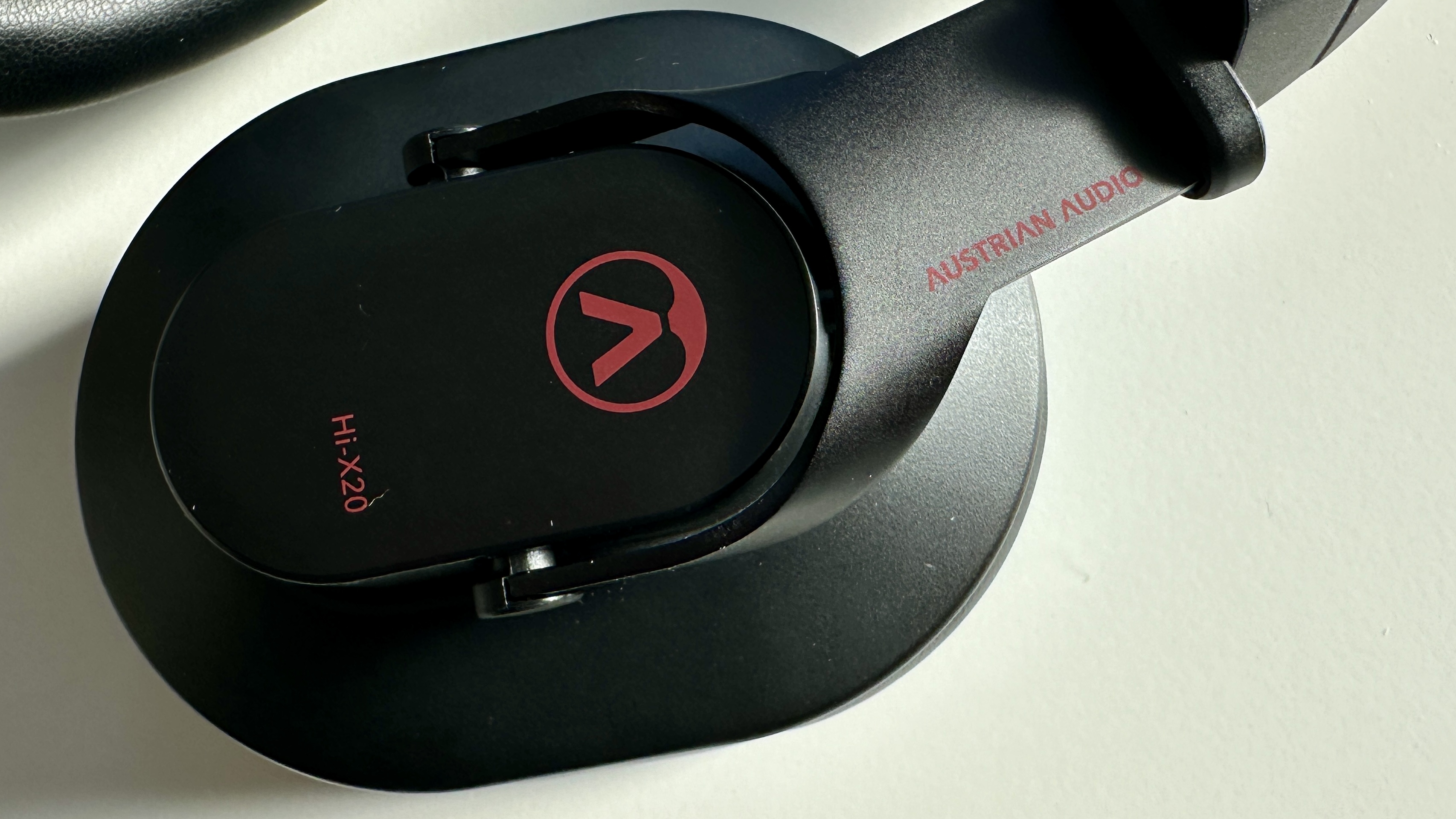
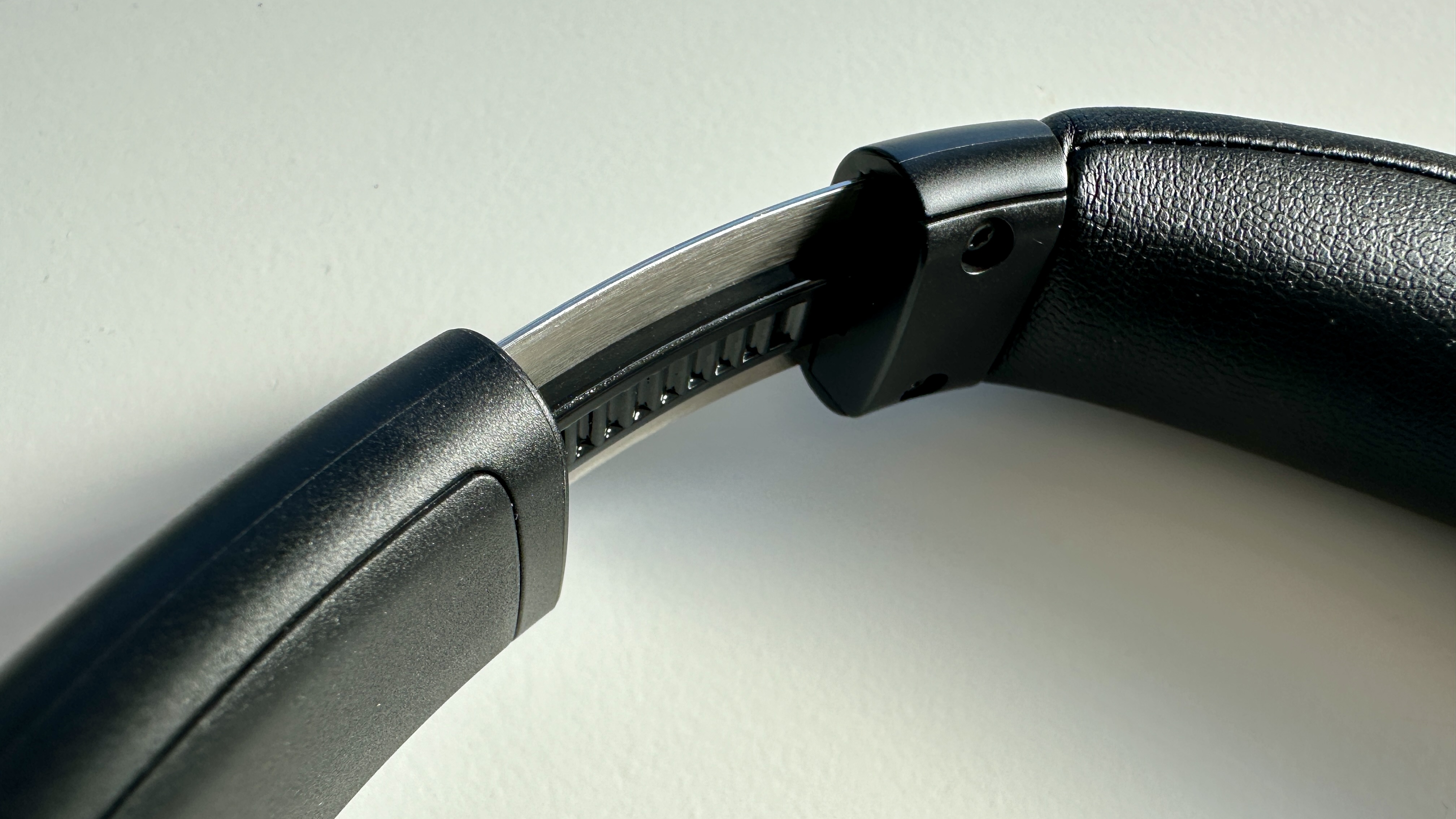
Specifications
Reasons to buy
Reasons to avoid
Austrian Audio isn't the most famous headphones maker in the world, but it's one you should know if you want high-quality, well-priced sound. We loved the dynamic, powerful and driven audio of the Hi-X20 across the frequency range – we said the treble is "nicely controlled and with enough substance to prevent even the crunchiest treble sounds becoming edgy or hard", while the mid-range can deliver vocals that are "assertive and articulate", and through the bass they "extract and contextualize just as much detail as elsewhere." We did note that the bass may not be quite as full in the deepest notes as some would like, but it's fair for the price.
We also noted how well the frequencies are integrated through each other, and said "They create a large, well-defined and properly organized soundstage, too, and manage to unify even complex recordings into singular occurrences."
We also found them comfortable to wear, adjustable, well-made and reasonably good-looking for non-nonsense audiophile-friendly cans. They fold for travel, too, and come with a nice cloth bag, which we always appreciate.
The only clear downside is the 3m cable they come with – a shorter option would be welcome, because it's a bit much for most casual listening situations. That's hardly a big problem (you can swap it out, after all). For the $150 / £120 / AU$250 price, this is as good as headphones sound.
Read our full Austrian Audio Hi-X20 review
The best open-back wired over-ear headphones
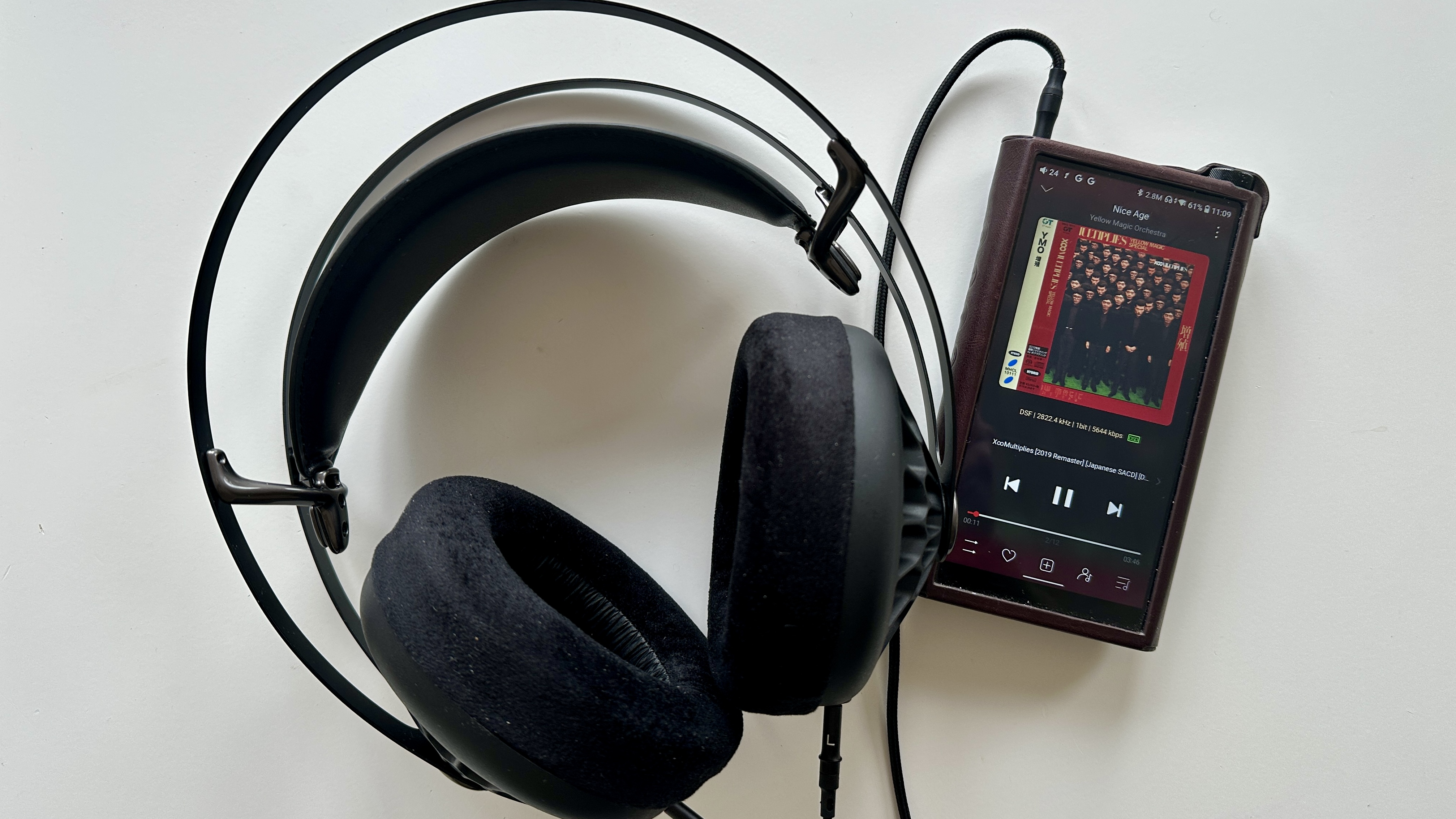

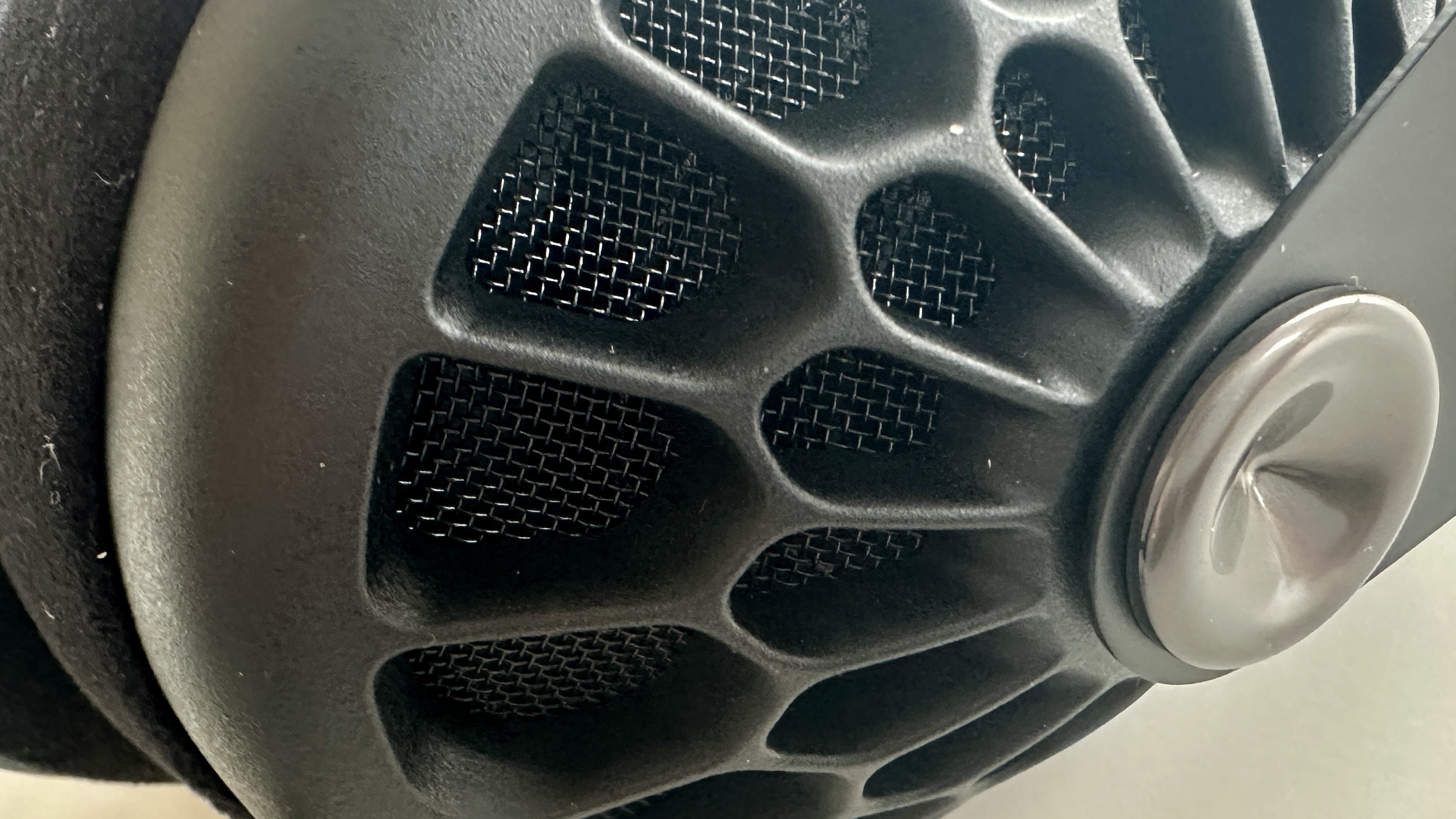

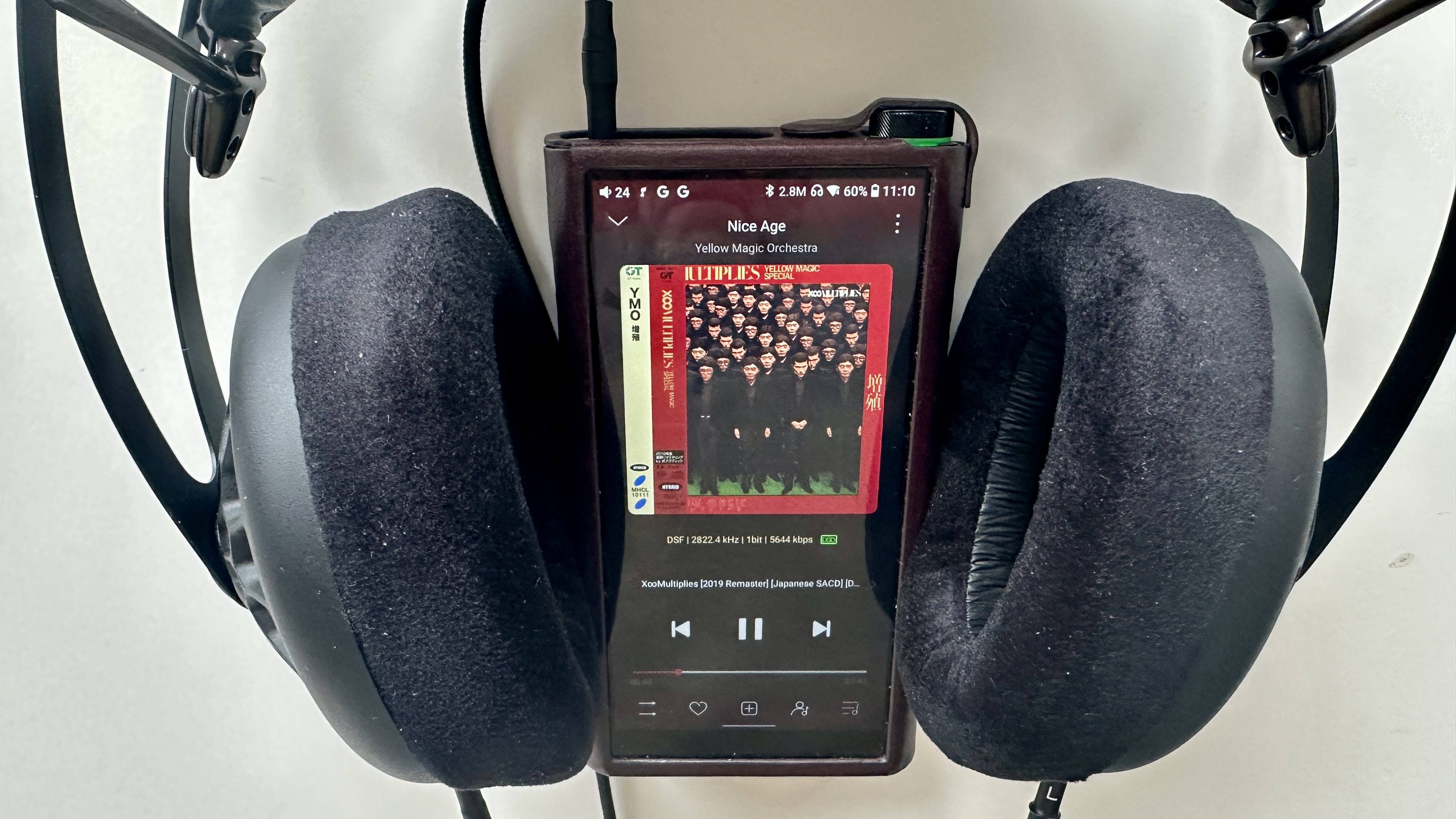
Specifications
Reasons to buy
Reasons to avoid
If you love a natural, open sound, then a pair of wired, open-back headphones are the way to go and the Meze Audio 105 AER are our favorite pair for under $400 / £400. These headphones boast a big, well-defined soundstage on which every individual element is detailed and gets to express itself. But being open-back means they don't block out the outside world, so they need to be used in quiet spaces – and they're wired only as well.
You have to make trade-offs for this design, but if you're an audiophile then they're more than worth it as they sound fantastic, especially when paired with one of the best portable DACs or hi-res music players. The audio on offer here is best described as big, unified and poised with impressive powers of resolution. In fact, every track we listened to felt more like a performance. In our review, we wrote: "they have the sort of direct, unequivocal overall personality that makes every listen an event and makes every recording sound like it deserves your attention." High praise indeed. We said in our testing that they do leak sound – which means you may not be popular in the office if you use them, but that's the nature of open-back.
They have premium ear cup cushioning made from velour-covered memory foam and a headband that's lined with PU faux leather. The result is a very comfortable pair of headphones, which are also Meze's lightest to date at 336g. However, it's worth mentioning here that the headband can be adjusted and yet won't suit those with smaller heads, so be warned if that's you.
They're wired with a 1.8m length of braided cable that has 3.5mm connections at one end and a single 3.5mm connection at the other. They also come with a 6.3mm adapter. Unfortunately, there's no balanced cable included.
If you're willing to make some sacrifices for their design – mainly that they're open-backed, so will leak sound in and out, and the size won't suit everyone – they sound truly exquisite. If that's what matters the most to you, have at them.
Read our full Meze Audio 105 AER review
The best over-ear headphones for design
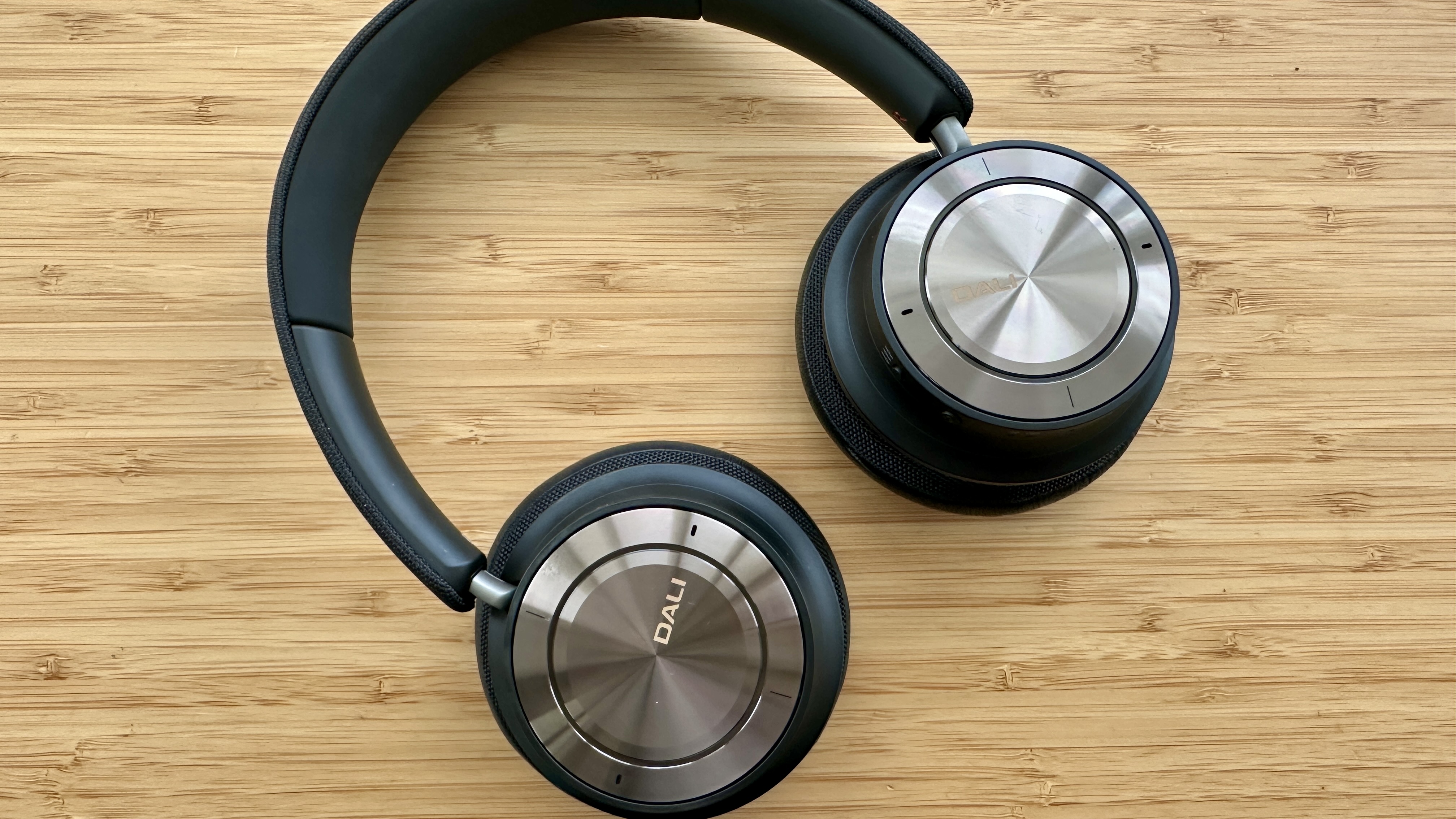
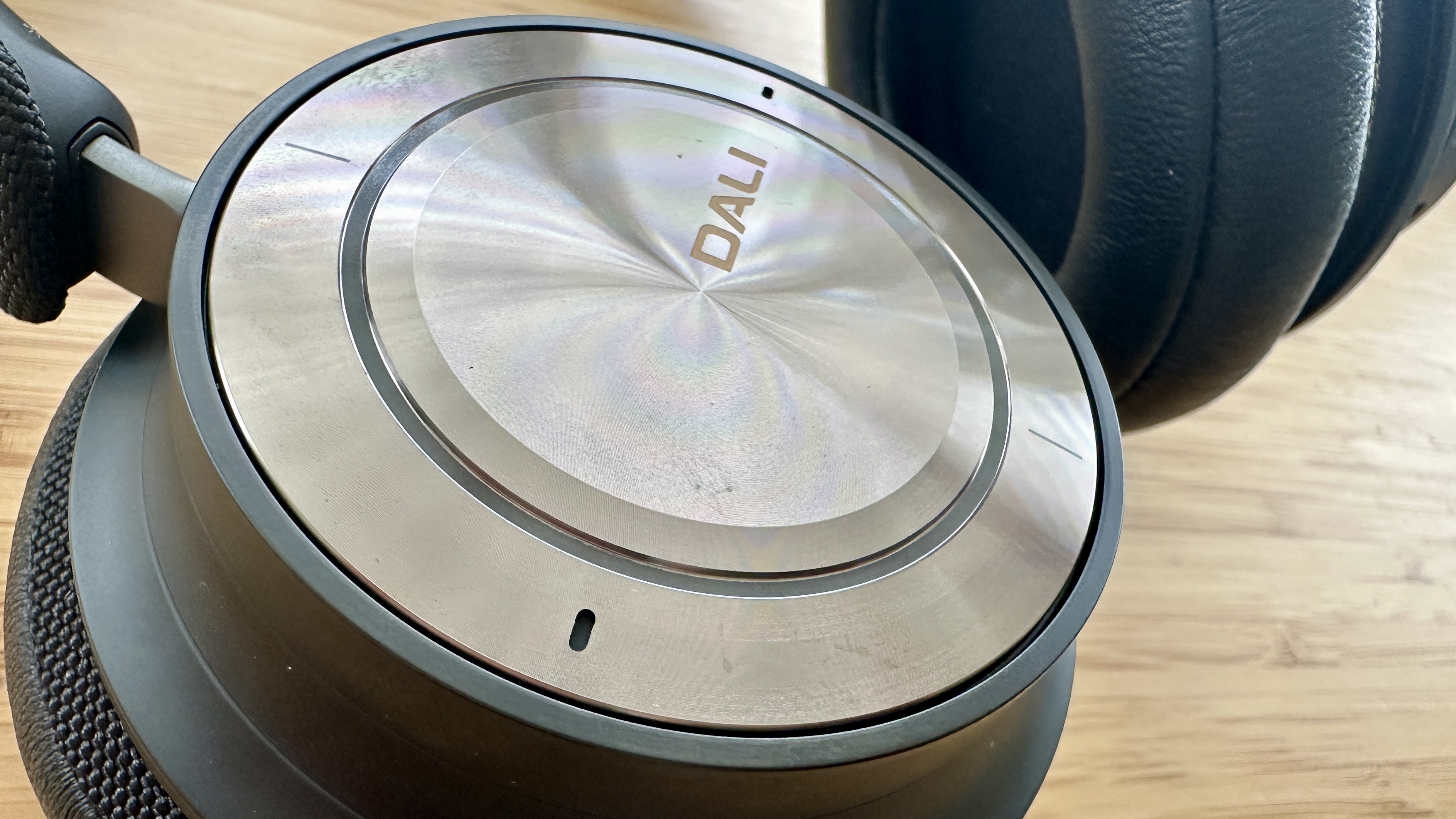


Specifications
Reasons to buy
Reasons to avoid
If you like your over-ear headphones to look as lovely as they sound, we recommend the Dali IO-8. Expect an exceptional level of build and finish quality here – these headphones definitely qualify for our ‘best for design’ pick. They look minimal and premium, with perfectly circular earcups, brushed and anodised metal on the exterior, memory foam lining the inside for maximum comfort, and a choice of ‘iron’ black or ‘caramel’ white finishes. The only drawback in terms of design is there is leather on these headphones and there’s no alternative to opt for instead. Which is a shame as it means they’re not for vegans.
Certainly not style over substance, the Dali IO-8 deliver exceptional sound that we described as “alive with detail” in our review. This is the case, to our pleasant surprise, across all genres and volumes. Expect a thoroughly enjoyable listen, whatever you feed them. In our review, we wrote: “There’s a sensation of directness and of positivity to the way these headphones deliver music.” Even with ANC on, the sonic performance isn’t negatively impacted. And noise-cancelling performs very well – although it can be beaten by Bose.
The specs list here is impressive, packing in everything you’d expect from a pair of high-end headphones, including Bluetooth 5.2 with aptX Adaptive compatibility, 24bit/96kHz support, 50mm full-range drivers with 10Hz-43kHz frequency response and 30 hours of battery life with ANC on. They can also work with a wired connection – ideal if you forget to charge them and don’t have access to power. The only thing that’s missing here is a control app. If you like to tweak your sound settings there isn’t much choice here then, with only two EQ settings on offer. But you could argue: why would you need to mess with the sound when it’s this good? If you don’t like fussing with apps, this could actually be another point in favor of the Dali IO-8 rather than against them.
The Dali IO-8 are not cheap. However, by Dali standards, they’re actually more on the affordable side. If you’re on a budget, or you don’t like the leather or the lack of a control app, you’ll find plenty more options that will better suit you. Otherwise, we really rate these headphones (we awarded them a rare 5 out of 5 stars in our review) because with an impressive list of specs, excellent sound and a gorgeous design, they’re going to deliver a stellar performance for those who are willing to splurge.
Read our full Dali IO-8 review
The best over-ear headphones for movies

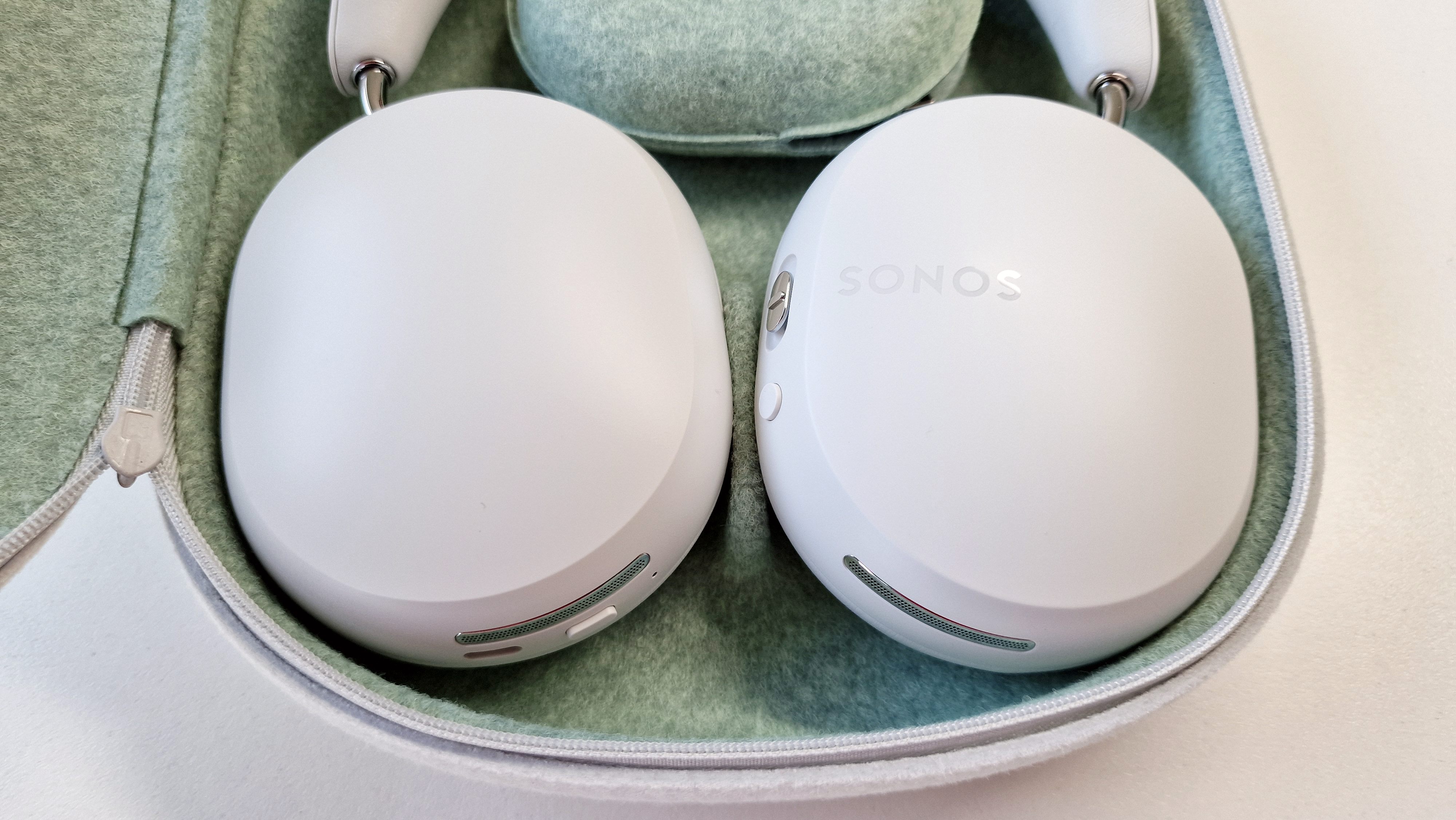

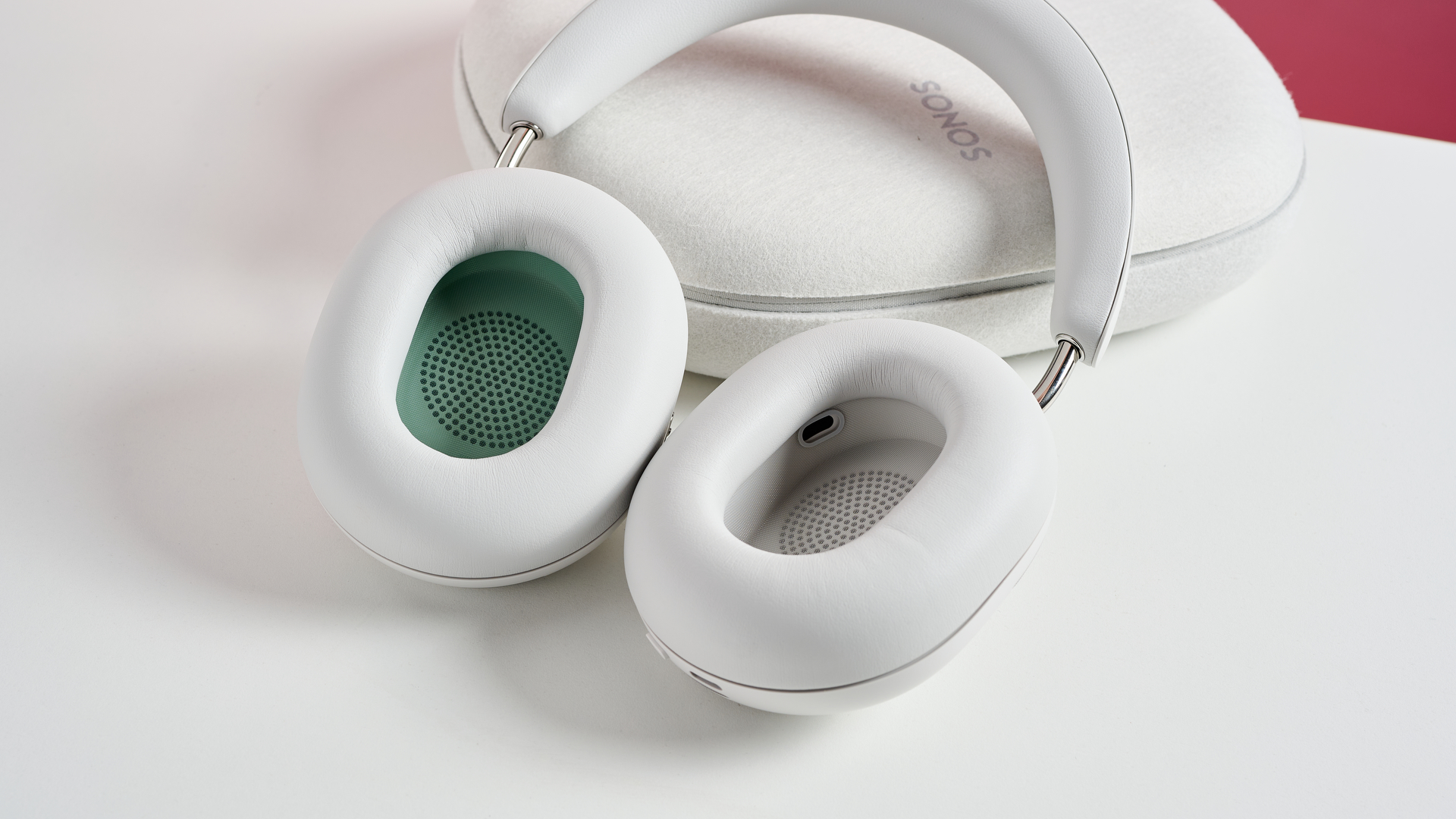
Specifications
Reasons to buy
Reasons to avoid
Sonos' first headphones were highly anticipated, and a little disappointing: they don't work with the overall Sonos Wi-Fi multi-room system (even though they do support Wi-Fi), and their music quality is merely very good, not the kind of excellent audio we'd expect for headphones that come with such a high-end price.
However, they still managed to win us over with their fantastic performance with movies. They support head-tracked Dolby Atmos spatial audio from any device that supports Atmos over Bluetooth – which includes iPhones, iPads and Samsung phones, so no shortage – and it's absolutely fantastic. It's weighty, it's convincingly directional and doesn't sound like the audio is being pushed right into your ears, and dialogue is elevated super-clearly out of the mix while still feeling natural. Having directly compared it to the spatial audio on the Bose QuietComfort Ultra Headphones and AirPods Max, the Sonos were our favorite option.
And they do have a Sonos ecosystem trick: if you have a Sonos Arc soundbar (and support will come to all Sonos soundbars in the future), you can connect the headphones to them over Wi-Fi, and use a button on the headphones to instantly switch from listening over Bluetooth to streaming the sound from your soundbar instead – so you can listen to anything that plays on your TV with privacy, and zero latency.
It all worked fantastically well for us, and the headphones also offer very strong active noise cancellation, wired listening over USB-C (lossless) or 3.5mm jack, and a 30-hour battery life over Bluetooth with ANC on – though when listening to sound from your soundbar, this battery life dropped to around 10 hours based on our testing.
For music lovers wanting premium ANC headphones, we would steer you towards the Bose Ultra or the B&W PX8. But if you want something heavily focused on provided a personal home theater experience, we really recommend these.
Read our full Sonos Ace review
The best over-ear headphones for Apple fans
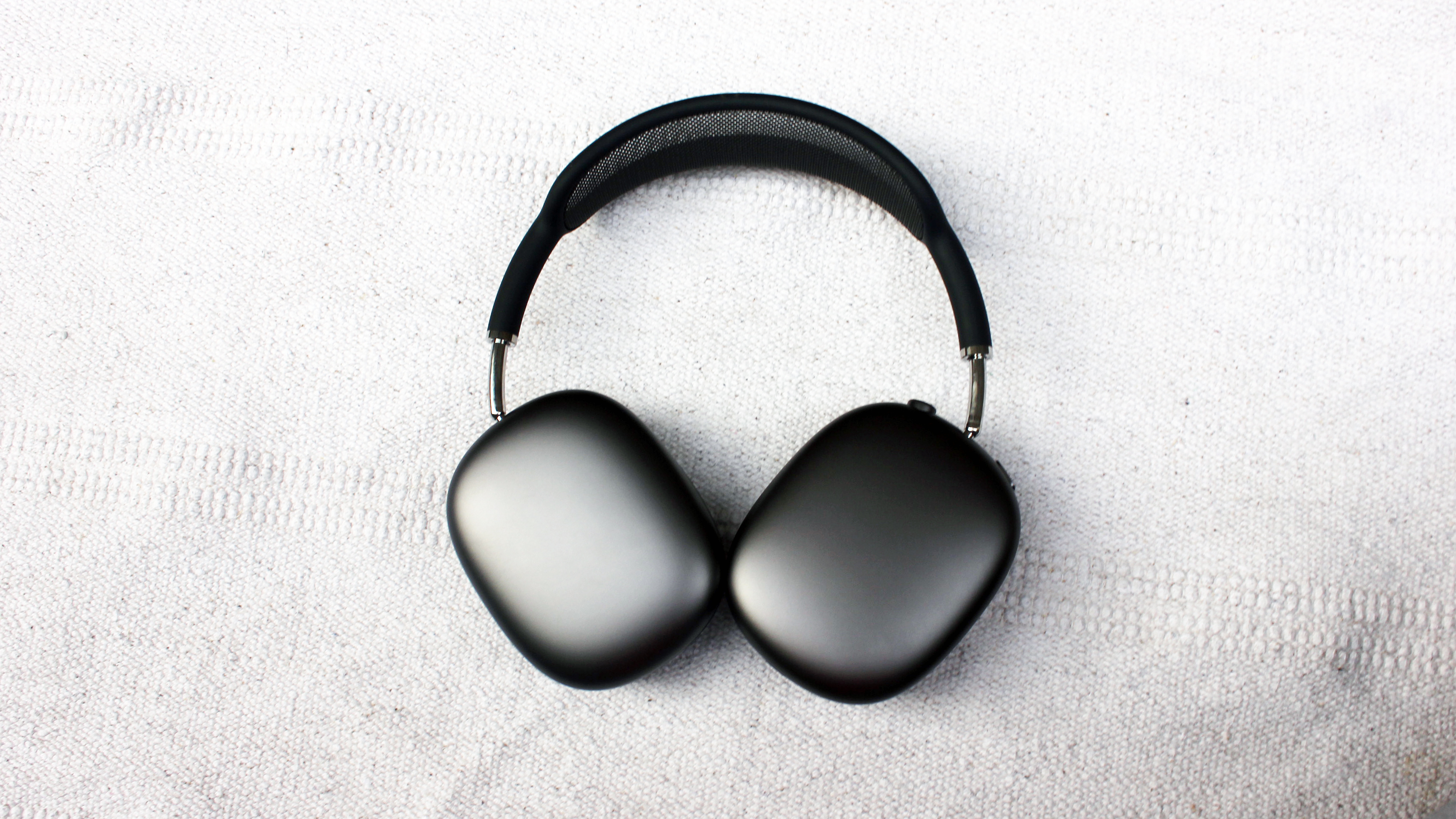
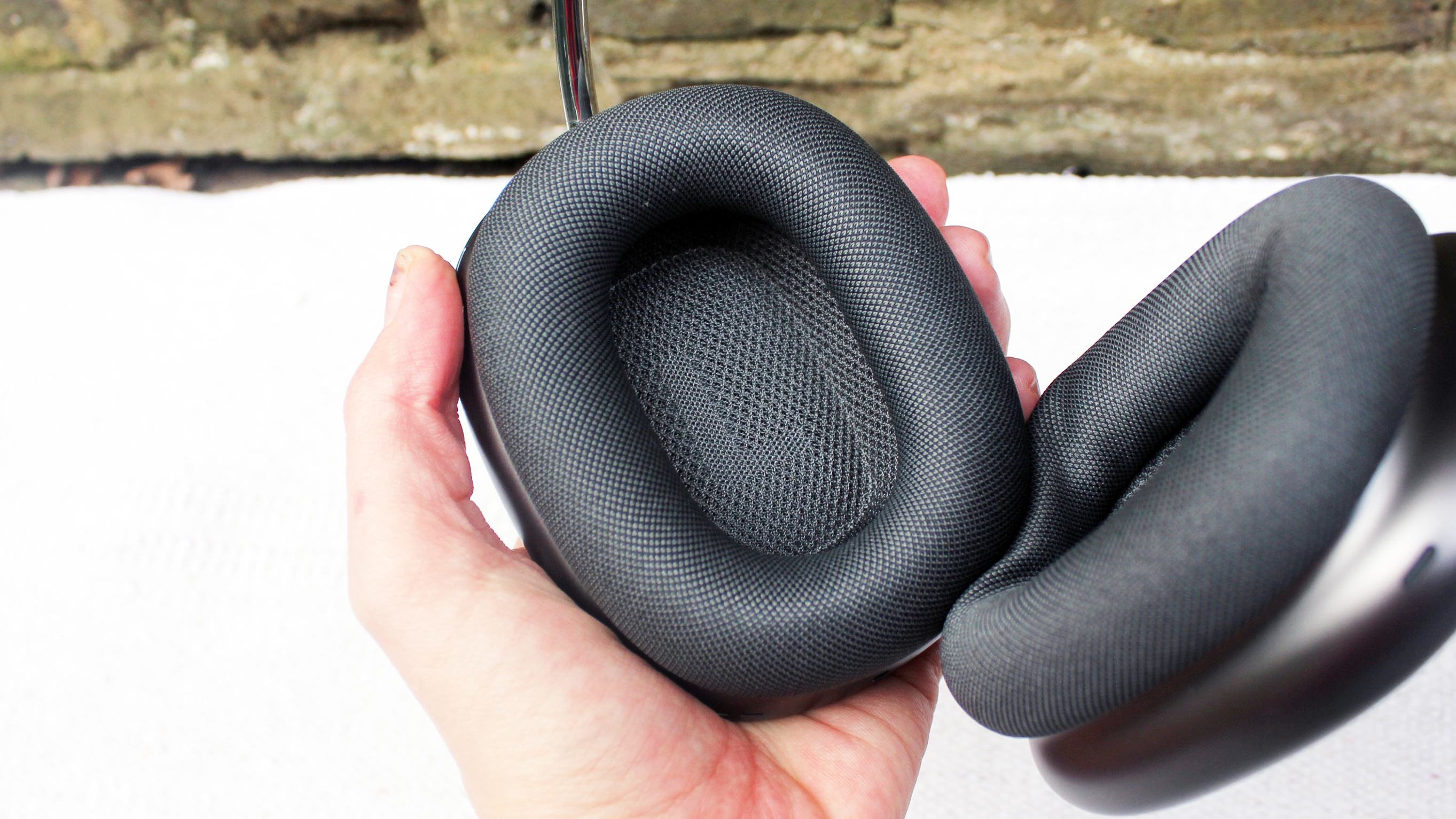
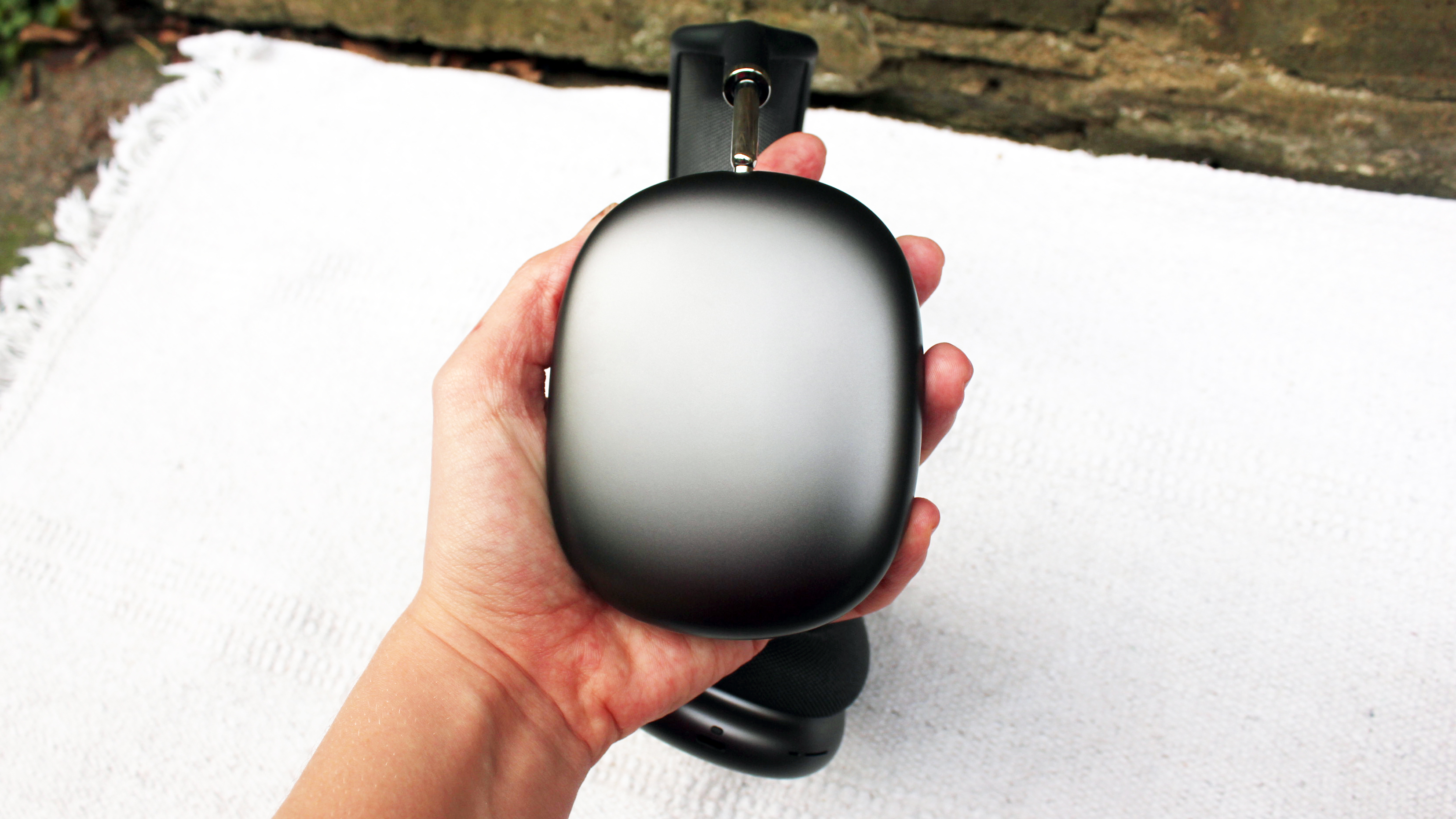
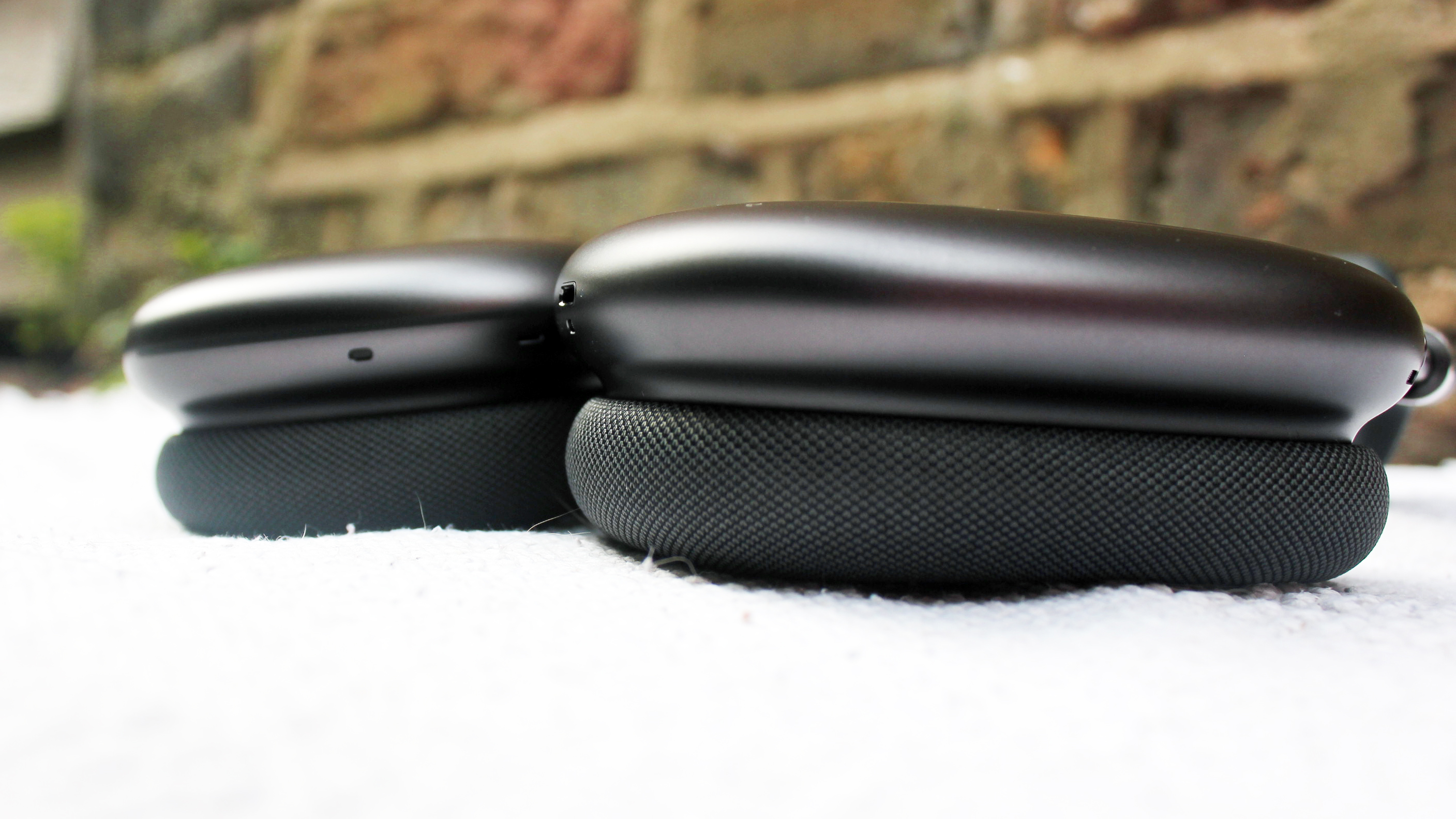
Specifications
Reasons to buy
Reasons to avoid
The AirPods Max are the best-sounding headphones made by Apple, and the company's first over-ears. They have very strong active noise cancellation, superb sound quality, the best spatial audio available so far, and a striking look with a premium feel. There's a ton to enjoy with them, and they have way more special features if you're deep in the Apple ecosystem, including auto-switching between devices and Find My support if they're misplaced. Very few of these work on Android (basically just music and noise cancellation), so they're very much for the Apple-heavy crowd, especially at this high a price.
And at this high price, their lack of hi-res audio support really grates, but a lot of people will probably be able to forgive it. They have a natural, dynamic and detail sound that we enjoy a lot, though the Bose QuietComfort Ultra Headphones are at the same level of quality and are cheaper. However, the nothing matches the Dolby Atmos 3D spatial audio that you get from these when watching a movie on an Apple device – it's so good.
If you've already bought into the Apple ecosystem, if the price isn't a concern, and you've got lots of Apple tech, then the extra features you get from these may put them above a lot of the competition. But we think most people will be better served by spending less on the Bose Ultra Headphones.
Read our full Apple AirPods Max review
The best high-end wired over-ear headphones
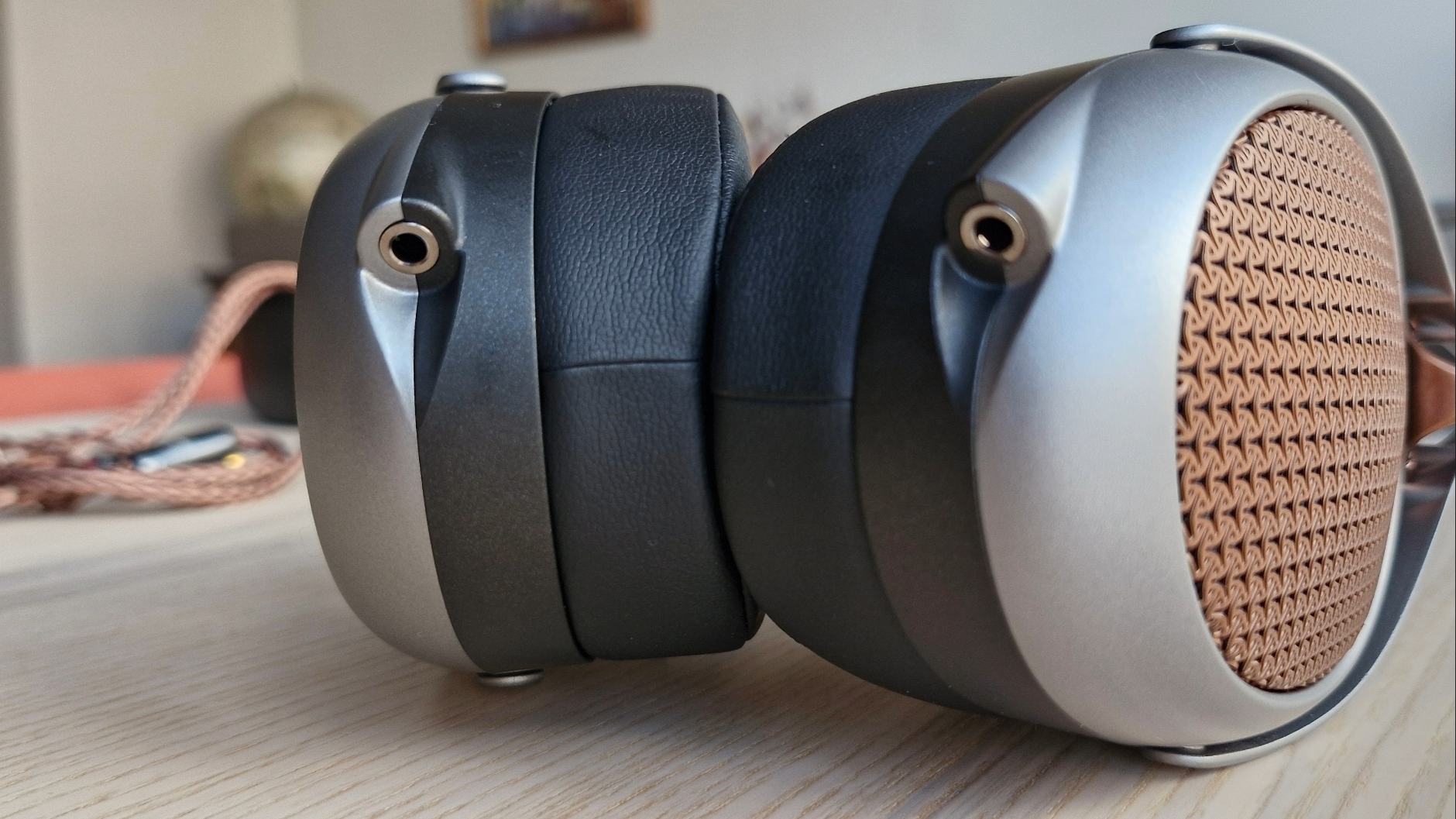
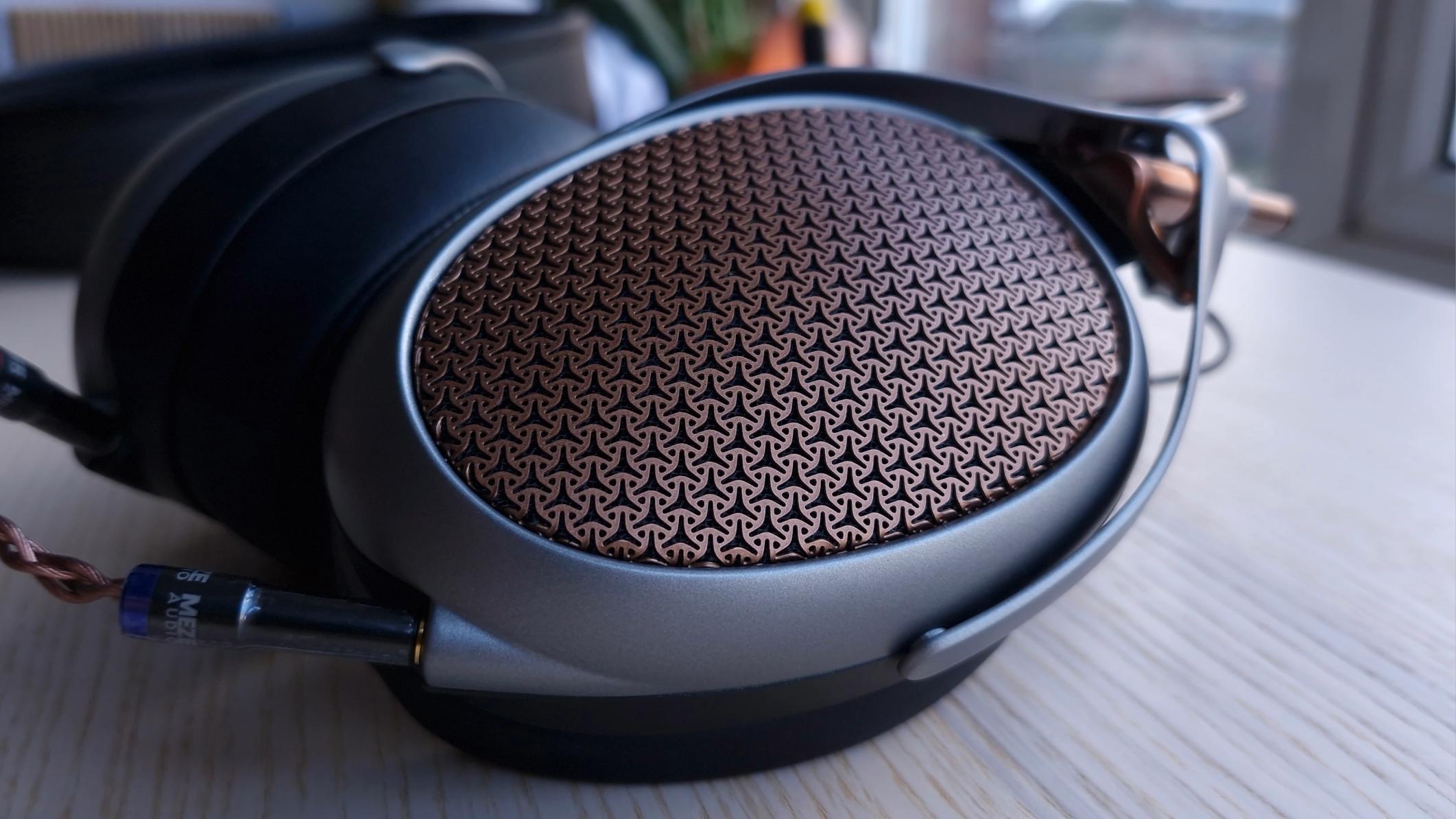
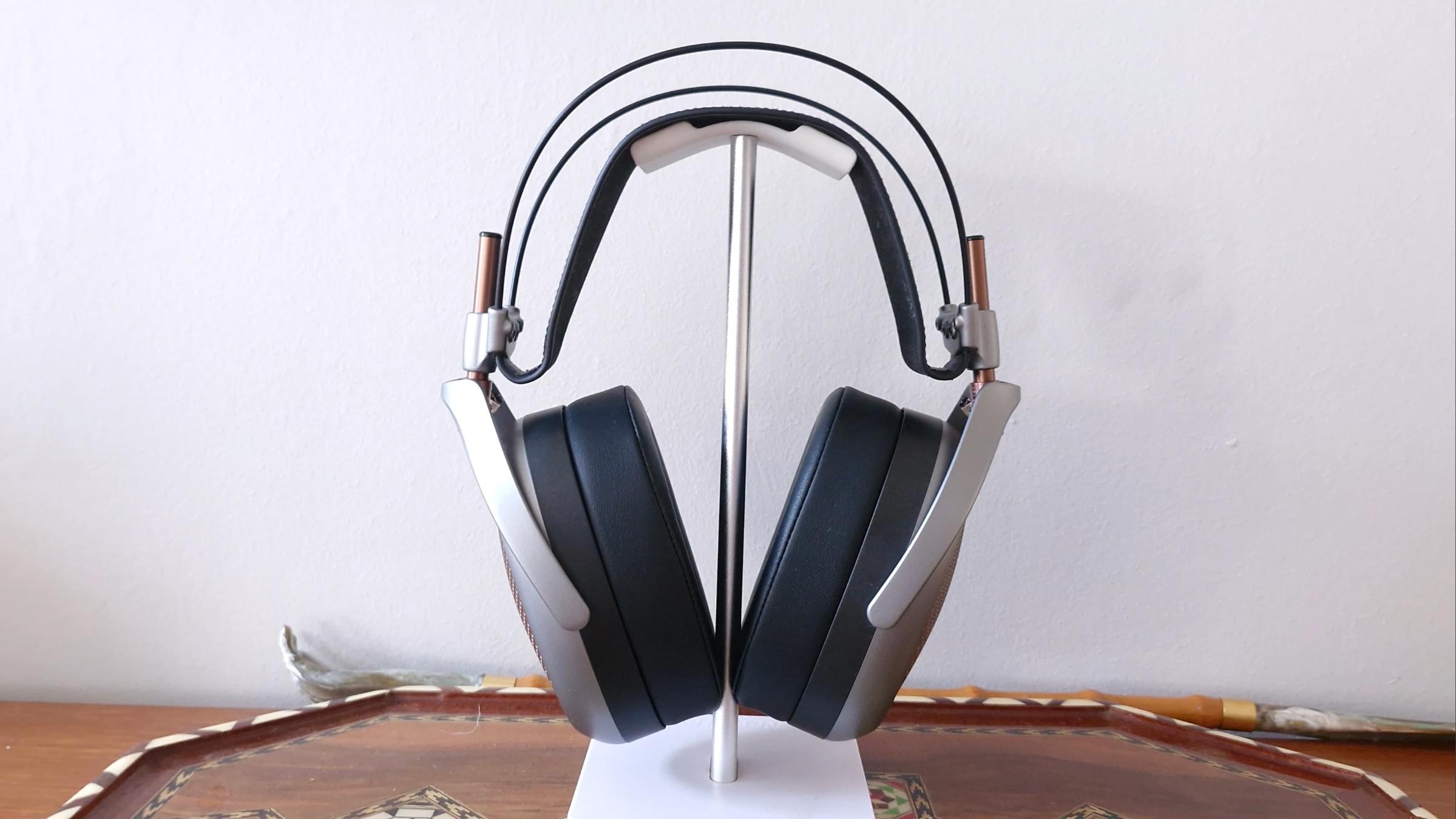

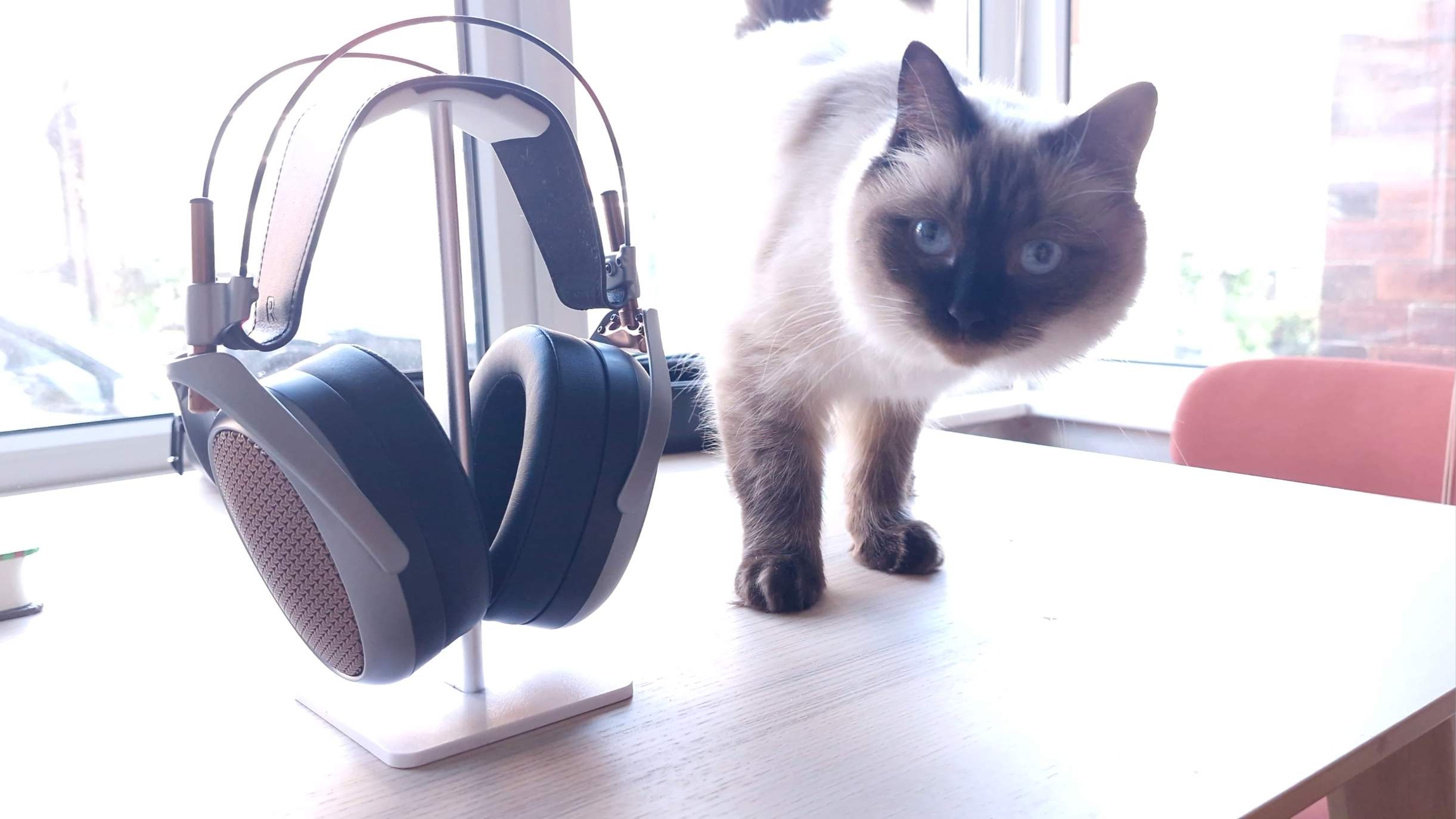
12. Meze Audio Poet
Our expert review:
Specifications
Reasons to buy
Reasons to avoid
If you've read this far, you came here for the high-end headphone buy, and at $2,000 / £1,899 / AU$3,550 that's what we're giving you. Don't say We didn't warn you…
Yes, the Meze Audio Poet are a posh pair of planar magnetic, open-backed cans – and that is good because for this investment, you deserve ‘posh’ and nothing less than posh, thank you very much.
Luckily, the Poet deliver in spades – from an impressive build and finish to a lagoons-deep listen. Thoughtful touches like the magnetically attached ear pads and a neat, forward-thinking adjustment mechanism exemplify the careful consdieration with which the Poet were made, and you love to see it.
An occasionally narrow soundstage and an eventually fatiguing listening experience serve to make them at least feel real. They're not truly perfect (nothing is, you know) but they easily sit among the best over-ear headphones on the market – and we only mention it because of the hugely-increased scrutiny premium prices must invite.
For those with the hi-fi equipment, the cosy chair, the ample budget and the inclination, the Poet are a pair of headphones you simply must add to your list for a listen next time you head to the dealership.
Read our full Meze Audio Poet review
More over-ear headphones we've tested
AKG N9 Hybrid: They're great across the board, except when it comes to ANC. However, if you're not swayed by noise-nixing, they're still a great buy. So do take a look at our full AKG N9 Hybrid review.
Anker Soundcore Space One Pro: We recently published our Anker Soundcore Space One Pro review, a pair of over-ears that did impress us with solid features and booming bass. However, they don't make the cut because we felt they looked too chunky and their buttons didn't work reliably enough.
Baseus Bowie 30 Max: This is an exceptionally well-specced set of headphones for the price, delivering spatial audio, noise cancellation and more on a budget. Unfortunately, our Baseus Bowie 30 Max review found that they don't sound especially good, so they don't make it to this list.
Beyerdynamic Aventho 300: These awesome wireless headphones very nearly made it into this guide, but they're still just a tad pricey against direct competition. For example, they're dearer than the Sony WH-1000XM5, which is an issue. Still, do read our Beyerdynamic Aventho 300 review as there really is a lot to love here.
Bose QuietComfort Headphones: The Bose QC Ultras are in this guide, but if you're looking for a cheaper alternative, the original QCs are worth your time. In our Bose QuietComfort review, you'll find they're also light, comfortable, sound great and have powerful ANC. No, they don't feel as modern or refined as the newer Ultras. But they'll suit anyone looking for a simple, no-frills option that still has the Bose seal of approval.
Bowers & Wilkins Px7 S3: Take a look at our Bowers & Wilkins Px7 S3 review and you'll see these headphones are premium through and through. And yes, the price reflects that, too – but they’re worth every penny. We only removed them from the guide above as they were replaced by the newer Px8 S2.
Cambridge Audio Melomania P100: They're no longer our top premium pick, but that doesn't mean these over-ears aren't still well worth your time – and the August 2025-issue Fan Edition option adds DynamEQ software, a blue colorway and a slightly cushier headband. They boast an understated and comfortable design with a range of excellent features, including top-tier sound, solid ANC and a great 100 hours of battery life. Read more in our Cambridge Audio Melomania P100 review.
CMF Headphone Pro: Look, they’re excellent, we rated their battery life, sound and more. In fact, they very nearly beat the 1More Sonoflow Pro HQ51 to a spot in the guide. But, you see, we just couldn’t shake the feeling that their quirky design may not suit everyone's tastes. Take a look for yourself in our CMF Headphone Pro review.
Earfun Wave Pro: These excellent Earfun cans have long been our 'best affordable' choice, but were pushed out by the newer, slightly more impressive 1More HQ51. Still, the Wave Pro on-ears are an excellent choice on a budget, they sound good, look nice and have a solid battery life to boot. If you find them discounted, even better. Read our full Earfun Wave Pro review for more.
FairPhone Fairbuds XL (2025): These over-ears are a great shout for eco-conscious buyers, designed to last and made from ethically-sourced, recycled materials. Read our full FairPhone Fairbuds XL (2025) review if eco-friendly tech is a priority for you. But although they’re impressive for that reason, they’re a tad light on extra features compared to rivals, and it really is a cutthroat market these days where quality headphones are concerned.
FiiO FT1: We love the FiiO brand and these are the company's very first pair of closed-back over-ear headphones. We had high hopes, but read our FiiO FT1 review to find out more about why these headphones are a rare miss that we wouldn't recommend over many rivals.
Final D7000: We were seriously impressed with the sound quality of these open-backed wired headphones in our recent review. They're extremely expensive, but for most indulgent music lovers, we think they earn it. Read our full Final D7000 review for more.
Marshall Monitor III ANC: We've also had the opportunity to get an initial hands on with the Marshall Monitor III ANC over-ear headphones, an excellent-sounding pair of headphones that have a 70-hour battery life and a comfortable design. We'll need longer with them before we decide if they'll make this guide. But until then, take a look at our hands on Marshall Monitor III ANC review.
Noble FoKus Apollo: These headphones sound excellent, have a premium look and feel and an outstanding battery life. So why don't they make this guide? Well, as you'll learn in our Noble FoKus Apollo review, these headphones have a divisive design, which we know won't appeal to everyone. Th onboard mic also didn't work during our testing.
Nothing Headphone (1): despite thoroughly modern (almost cassette-like) looks and big claims, we just didn't think the sound quality of Nothing's first stab at over-ears was beating any class-leaders. We love the originality though – and the build quality is not to be sniffed at, as you'll see in our Nothing Headphone (1) review.
OneOdio Focus A5: The battery life here is impressive at 75 hours and they're affordable, but that's about it as far as things to shout about go. Read our OneOdio Focus A5 review and you'll discover we found these headphones to be a bit bass-heavy, and not well-balanced sonically speaking.
Panasonic RB-M600: We really enjoyed testing these affordable over-ears from Panasonic. Not only are they cheap, they have a lightweight build and a fantastic 65 hours of battery. However, as you can read from our Panasonic RB-M600 review, their design isn't going to suit everyone – and it's hard to tell without testing them. They also lack any water resistance, which isn't ideal for wearing them everyday or to the gym.
Sennheiser Accentum Plus: A very impressive pair of mid-range headphones from Sennheiser, and we've seen them fall to ridiculously low prices during sales season. They face a lot of very hot competition above and below them in their price range, which is squeezing them out of this list, but we really like them, and anyone looking for a pair of audiophile-baiting mid-range wireless headphones with noise cancellation should read our Sennheiser Accentum Plus review.
Sennheiser HD 505: Considering an open-back design? Give our Sennheiser HD 505 review a look. For the money, they get plenty right and don't leak as much sound as you might think. The thing is, the low end feels a little lacking, and fierce competition at the level means they're far from your only option.
Sennheiser HDB 630: These over-ears are really very good, serving up long battery life, immersive, detailed hi-res audio and some impressive ANC. However, the bundled dongle didn’t always work and it’s quite a niche addition currently. If you’re a fan of Sennheiser, it is still worth reading our Sennheiser HDB 630 review.
Sennheiser Momentum 4 Wireless: We love these five-star headphones, thanks to their rich sound, huge 60-hour battery life, and great features. But the Cambridge Audio P100 knocked them off this list by offering all that at a cheaper list price. The Sennheiser are often available with big discounts that make them super-tempting, so definitely read our Sennheiser Momentum 4 Wireless review to learn more about them.
Sony ULT Wear: Sony's bass-loving mid-range headphones are a perfectly good listen, but they're just a little shy of special, and a little too much to be a bargain. We still liked them, but it feels like you can get better bang for your buck. Our Sony ULT Wear headphones review digs into the full nuance.
Sony WH-1000XM5: The newer Sony XM6 may have taken the crown for ANC, but the XM5 are still a solid choice, especially if you spot a good deal (which you should regularly be able to find now). They're not a massive leap from the XM4, which is why those remain top of this guide, but you still get very good noise cancellation, great sound, and loads of smart features. Read our Sony WH-1000XM5 review for more.
Sony WH-CH720N: A good all-rounder pair of headphones, with a comfortable fit, very well-balanced sound, and noise cancellation that helps to make sure you can hear what's happening. We liked them a lot in our Sony WH-CH720N review, but there are headphones with more features and bigger soundstage for a similar price.
Meet the team
Our expert team of reviewers have years of audio tech experience and testing. They've covered all of the latest and best headphones over the past 10 years and more, which means they're clued up on everything there is to know about the industry.

Becky became TechRadar's Audio Editor in 2024, but joined the team in 2022 as Senior Staff Writer. She focuses on all things audio and hi-fi. Before TechRadar, she spent three years at What Hi-Fi? testing, reviewing and generally enjoying everything from wallet-friendly wireless earbuds to huge, multi-product high-end sound systems. Her career as a professional dancer is what still makes listening to music all day a true joy – and why her quest for the best pair of headphones whatever your budget is never done.

Matt Bolton is TechRadar's Managing Editor for Entertainment and has more than a decade of experience as a technology journalist. Before joining TechRadar he managed TV and audio content for T3.com, and before that he was the Editor of T3 magazine. He's contributed to many tech titles, including Creative Bloq, PC Gamer, Digital Camera World, Edge, Official PlayStation Magazine, PC Plus, MacFormat and many more.

Becca Caddy is a freelance technology journalist and author and she's been writing about consumer tech for more than 12 years with a focus on wearables, headphones and smart home devices. Her work has appeared in The Guardian, Wired, New Scientist, MIT Tech Review, Inverse, National Geographic, Lifehacker, Metro, Stylist, Grazia. Her first book, Screen Time, was published in 2021.

Simon Lucas is a freelance technology journalist and consultant, with a particular emphasis on the audio/video aspects of home entertainment. He was previously editor of What Hi-Fi? magazine and whathifi.com. He has written for Wired, Metro, the Guardian, HiFi+ and GQ, and has acted as an audio consultant for some of the world's most high-profile consumer electronics brands.

Tom Bedford was deputy phones editor on TechRadar until late 2022, having worked his way up from staff writer. Though he specialized in phones and tablets, he also took on audio and hi-fi products with great enthusiasm and a keen ear. He is based in London, UK and now works for the entertainment site What To Watch.
He graduated in American Literature and Creative Writing from the University of East Anglia. Prior to working on TechRadar, he freelanced in tech and entertainment, and also spent many years working as a mixologist.
How to choose the best over-ear headphones
Sound quality has got to be the most important feature to look out for when picking over-ear headphones. Audio quality from those bigger drivers (that doesn't rely on a seal betwixt ear tip and ear canal, as buds do) can be more expansive, open, nuanced and immersive.
But you also have to have an eye on comfort, because there's a big band going over the delicate crown of your head. Padding and material on the ear pads makes a difference too – and often, a broader headband is something to look for, so the weight can be better distributed.
People often choose over-ear headphones with active noise cancellation, because the around-ear pads are great at passive noise isolation to begin with – and it's a good call. Most of our picks on this list include ANC, but it's not the case that spending more on ANC automatically gets you better results. That's why we're here.
It's also possible to buy over-ear headphones with 'open backs', which means they allow air to flow right through the ear cup. This can lead to an expansive, powerful sound, but it also means audio leaks – great for listening in a special room at home, less good on the subway. Here's our in-depth explanation of open-back vs closed-back headphones.
The last big question is whether you want to go wired or wireless. Do you want to prioritise sound that isn't compressed by Bluetooth – and does your device have a USB-C (or even 3.5mm – some still do!) port to hook 'em up to? Most of our suggestions are wireless, because they tend to be preferred in this day and age, but some feature the option of going wired.
Not all wireless codecs are created equal, so if the cans only support SBC and AAC, you won't be getting higher-quality options such as Snapdragon Sound, aptX or LDAC. These are all CD-quality options, but your devices must also be compatible with them. Want truly hi-res audio? You'll need to go for some of the best wired headphones and add a good quality headphone DAC to the mix.
Finally, check the weight – 250g is fairly lightweight for advanced wireless headphones; 350g is about the maximum you'll want for longer listening sessions, but if the design's good, they can still be supremely comfortable.
How much should I spend on headphones?
That really depends on your budget – you don't need to overstretch yourself to prices you can't really afford in your quest for great sound.
You can find over-ear options among the best cheap headphones under $100 / £100 / AU$150 – check out brands like Jabra and JBL if you want to keep costs down.
The best noise-cancelling headphones and higher-spec options tend to cost more than this. For wireless headphones, the flagship models start around $250 / $250 / AU$450.
When you get to true audiophile headphones for analytical listening, the prices really start to shoot up – but these cans will last you decades if you look after them.
Is it worth getting over-ear headphones?
Choosing over-ear headphones over earbuds is a personal choice. There's no wrong option here but over-ear headphones typically provide better battery life and better sound quality.
Thanks to being larger, they can pack in a better battery along with more advanced features like superior drivers. By their very nature, they tend to provide better noise cancellation too as they cover your ears more comprehensively than earbuds.
However, some of your decision making process needs to come down to what you feel more comfortable with. Earbuds are easier to store away, but not everyone likes the feeling of them in their ears. Alternatively, headphones can feel more secure over your head but are heavier and require more thought when storing them.
What are the benefits of over-ear headphones?
The two biggest differences are comfort and sound quality. Many people find over-ear headphones much more comfortable to wear than in-ear ones, and because they're much bigger they can accommodate much larger and more powerful drivers. Unlike earbuds, they're not limited by having to fit into the very limited space of your ear canal.
Because over-ear headphones have bigger drivers, they can potentially deliver a wider frequency range than earbuds, especially at the low end where the bass lives. For example, our current favourites, Sony's WH-1000XM4 go down to 4Hz and top out at a very high 40kHz. By comparison Sony's closest equivalent earbuds, the WF-1000XM4, still reach 40kHz but the low end only reaches 20Hz.
There's another crucial factor here. According to the Hearing Health Foundation, over-ears are less likely to damage your hearing. Once damaged, hearing doesn't repair itself so it's really important to look after it. Over-ears don't sit so close to your eardrums so they're less dangerous over long periods – provided of course you don't run them too loud.
Another advantage of over-ears, albeit a horrible one, is that they don't end up covered in ear wax like in-ears do, so you don't have to read our how to clean wireless earbuds guide. And on a more cheerful note, they're also considerably harder to misplace.
Is over-ear better than in-ear for noise cancelling?
There's not really a simple answer to that one. Some earbuds are very good at passive noise cancellation, which is when the headphones simply block out a lot of external audio by being stuck in your ear canals. But over-ears can do much the same by enclosing your entire ears, so there's huge variation here.
Where things generally do differ is when active noise cancellation is involved. That's when your headphones analyze the sound around you and produce additional waves to cancel the sounds you don't want. As with the drivers that can deliver better sound quality, the larger size of over-ears means there's more room for tech in there.
In our many hours of testing and casual listening we've found that over-ears such as Bose QuietComfort Ultra Headphones and Sony's WH-1000XM5 deliver even better noise cancelling than the same firms' best earbuds. And they generally sound better too.
How we test the best over-ear headphones
☑️ More than 2,400 audio reviews
☑️ 15 years of product testing
☑️ Over 16,000 products reviewed in total
☑️ Nearly 200,000 hours testing tech
We've tested all of the headphones in this guide extensively, without exception, spending countless hours analyzing the sound, fit, design, specs, and value for money – and comparing them to the competition, of course. We always make sure we're giving you advice that's correct, considered and contextual.
Running-in: We allow all headphones a running-in period, to make sure the drivers are working at their best. We listen to audio from a range of sources, including both high-quality and more basic music services, as well as movies, online video, and podcasts or audiobooks. We're looking for all kind of elements here, including how deep the bass can go, whether that bass feels controlled and precise, whether the balance is right between different frequencies, whether the mid-range is able to communicate lots of detailed sound, whether treble frequencies stand out, whether treble is natural or too harsh, how spacious and natural the sound is, how dynamic the headphones between loud and quiet moments, and much more nuance.
Extra features: We test all additional features in headphones, including spatial audio support or active noise cancellation – we will test the latter in real-world situations, including public transport and walking around a city.
Smart functionality: We'll test any smart features, including making sure that multi-point Bluetooth works seamlessly, or testing EQ-changing options and customization of active noise cancellation. We also monitor battery life ourselves, testing the depletion of the battery from full over time.
Perfect partnering: With wired headphones, we'll use a suitable amp where necessary to make sure they get the chance to perform at their full potential. And of course, we listen to myriad types of audio, including music, podcasts and movies, from various sources including (where connectivity permits) phones, laptops, NAS drives and dedicated hi-res audio players.
Latest updates to our over-ear headphones guide
December 15, 2025
Refreshed the introduction. Switched the Bose QuietComfort Ultra Headphones out for the newer Bose QuietComfort Ultra Headphones (2nd Gen), based on our recent testing. Added several models we’ve reviewed to the ‘also consider’ section, including the Sennheiser HDB 630, CMF Headphone Pro and FairPhone Fairbus XL (2025).
October 10, 2025
Refreshed the introduction. Added the AKG N9 Hybrid into our 'other options' section. Made the Sony WH-1000XM6 our 'best overall' pick. The WH-1000XM4s then become our 'best budget Sony buy' . Changed the Bose QCU Headphones to our 'best for ANC' choice. Switched the B&W Px7 S3 out for the Px8 S2 as our 'best premium' pick, based on recent testing.
August 5, 2025
Swapped the Shanling HW600 out for the new and recently reviewed Meze Audio Poet, as the best high-end wired set we've tested. Added more information about the Sony WH-1000XM6 to our entry on the WH-1000XM4 to help the reader understand where they sit in the pecking order. Added a new entry – the Nothing Headphones (1) – to our 'also consider' section.
June 5, 2025
Swapped the Cambridge Audio P100 for the Bowers & Wilkins PX7 S3 as our ‘Best premium’ pick, swapped the Bose QuietComfort Ultra for the Sony WH-1000XM6 as our ‘Best noise cancellation’ choice based on our comparative testing, and added a new ‘Best for Bose fans’ category, for those who only trust Bose. We added the Cambridge Audio and Sony WH-1000XM5 choices to our ‘more options’ section, as they’re still worth considering.
April 7, 2025
Switched out the Earfun Wave Pro for the 1More Sonoflow Pro HQ51 as our 'best budget' pick, based on our recent review. Added the Earfun cans into our 'also consider' section, as they're still well worth considering.
March 14, 2025
Updated the intro, added the Sennheiser HD 505 to our 'also consider' section based on our most recent reviews.
See more recent updates…
February 17, 2025
Swapped Sennheiser HD 660 S2 for Meze Audio 105 AER based on our testing. Added some more recently reviewed products to our 'Also consider' section.
January 16 2025
Rewrote the introduction. Added the Shanling HW600 as our 'best high-end wired' pick in the no. 12 spot based on our recent testing. Selected more product images to go with each entry so readers get a better sense of the size, shape and design of the recommendations. Added several new suggestions to our 'also consider' picks, including the OneOdio Focus A5. Refreshed all copy so it's up to date.
December 20, 2024
Checked all models against our latest reviews. Updated the intro to mention more of what we look for in our testing, and added more models to our section of other options we've reviewed.
November 6 2024
Added a 'meet the team' section, to introduce our talented audio review team. Rewrote the 'How to choose' section to better explain how to approach buying over-ear headphones.
November 1 2024
Rewrote the introduction. Switched the Bowers & Wilkins PX8 for the Dali IO-8 as our 'best design' pick based on our testing. Added some new options to our 'also consider' section, including the Noble FoKus Apollo.
October 3 2024
Updated the introduction, added several new over-ear headphones to our 'also consider' section, including the Anker Soundcore Space One Pro and Marshall Monitor III ANC. Itemized our 'how we test' section to make it easier for readers to understand our reviewing process.
September 4 2024
Replaced the Edifier Stax Spirit S3 with the Stax Spirit S5, based on our review. Added more information about other recently reviewed products.
August 5 2024
Replaced the Sennheiser Momentum 4 Wireless for the Cambridge Audio Melomania P100 based on our extensive testing and 5-star review.
July 5 2024
Added the Sonos Ace the best over-ear headphones for movies, based on our testing and comparison with other headphones in the list.
June 6 2024
Swapped Sony WH-CH720N for Earfun Wave Pro as our budget pick, based on our review, and current prices.
May 9 2024
Checked all products against our latest reviews, and updated the 'Also consider' section with information about new options.
March 20 2024
Added some additional information about how we test, and added a new section covering our recent reviews that haven't made it into this list.
8 Feb 2024
Updated to include the Bose QuietComfort Ultra Headphones as the best for active noise cancellation.
2 Jan 2024
Updated with 2024 information; all products checked against latest reviews.
15 November 2023
Updated with information about expected Black Friday deals on these headphones.
13 October 2023
Checked all products against our latest reviews.
17 August 2023
Added quick list navigation and updated product listings to reflect latest launches.
7 July 2023
Updated rankings to include the Sony WH-CH720N. Re-ordered the list to reflect latest pricing and options in the market. Added new easy navigation subheadings.
23 May 2023
Checked list against latest product reviews.
Sign up for breaking news, reviews, opinion, top tech deals, and more.

Becky became Audio Editor at TechRadar in 2024, but joined the team in 2022 as Senior Staff Writer, focusing on all things hi-fi. Before this, she spent three years at What Hi-Fi? testing and reviewing everything from wallet-friendly wireless earbuds to huge high-end sound systems. Prior to gaining her MA in Journalism in 2018, Becky freelanced as an arts critic alongside a 22-year career as a professional dancer and aerialist – any love of dance starts with a love of music. Becky has previously contributed to Stuff, FourFourTwo and The Stage. When not writing, she can still be found throwing shapes in a dance studio, these days with varying degrees of success.